In August 2023 five of us did a wonderful but hard-going hike through some of the less-visited sections of Cathedral Lakes Provincial Park – near Keremeos, BC and bordering the US/Washington border. Andrea and I and many friends have camped and hiked in Cathedral Park on numerous occasions but this was the first time I attempted back-country overnight backpacking. As usual we took the shuttle provided by the Cathedral Lakes Lodge to get up to the core area of the park. We camped at the Quinisco Lake campsite for 2 nights and explored some of the popular trails in the core area. Then we hefted our packs and set off on a 3-day, 2-night trek – first to Haystack Lakes and then to Ewart Creek and back down to the main road at Ashnola River. Here are some photos from the trip.
All photos © Alan Burger
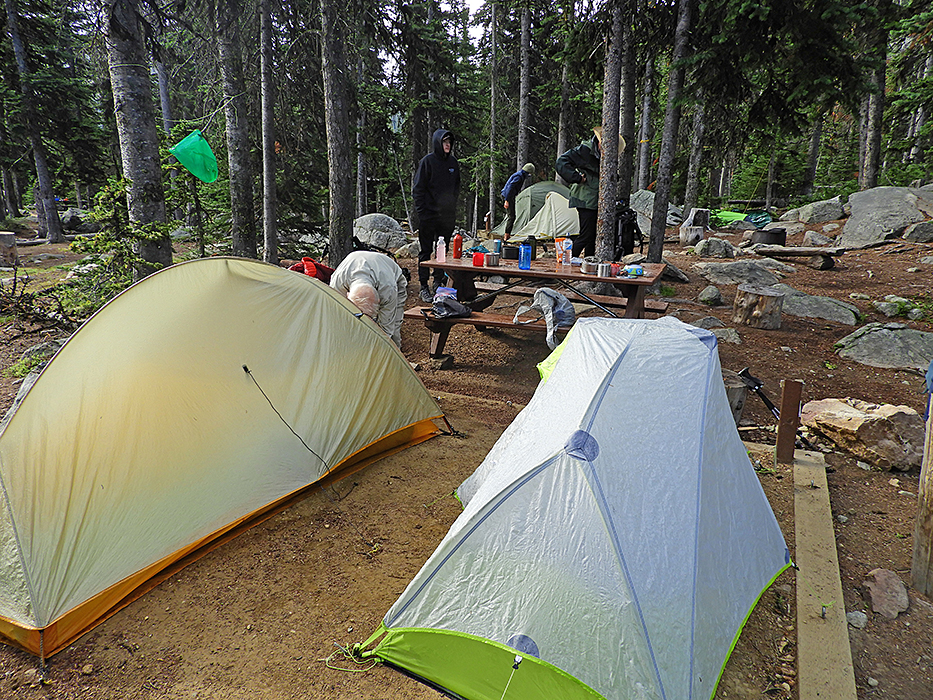
Our group camping at Quinisco Lake. We stayed here for 2 nights while exploring the well-used trails in the core area of Cathedral Lakes Provincial Park.
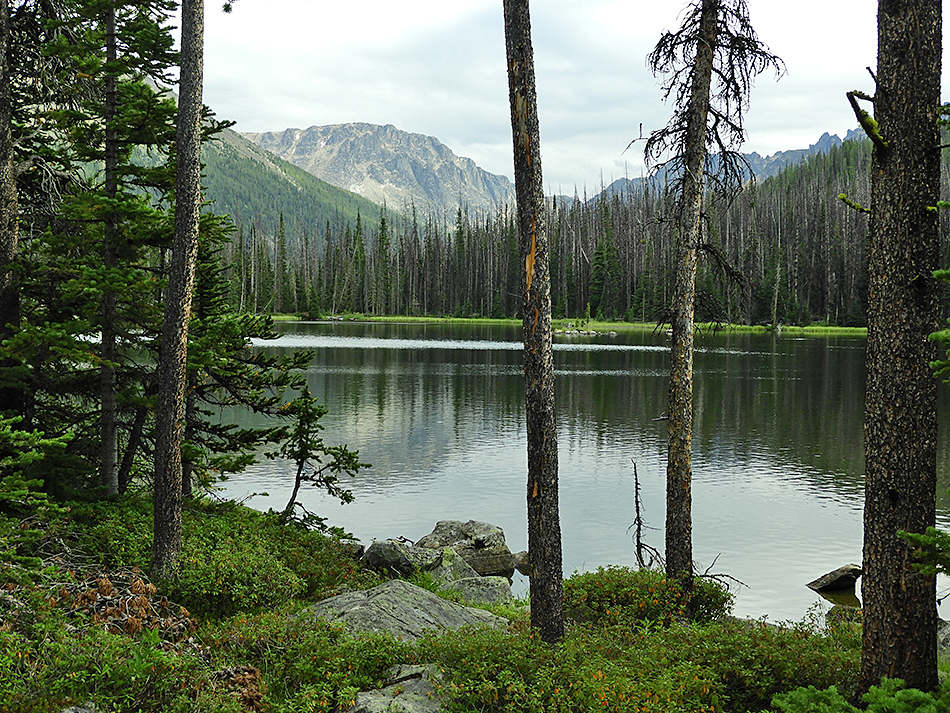
Lake of the Woods – one of seven scenic lakes in the core area of Cathedral Lakes Provincial Park. The rocky mountain in the left distance is Boxcar which we traversed on our hike.
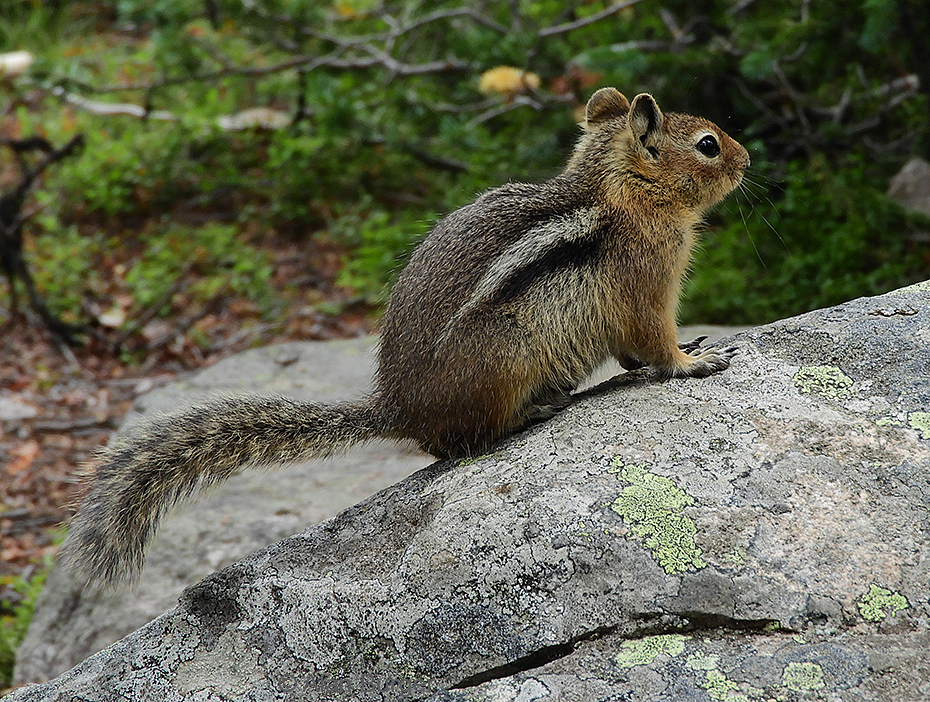
A Cascade Golden-mantled Ground-squirrel. Double the size of a chipmunk, they have the same habit of boldly trying to steal one’s food at the core area campsites.
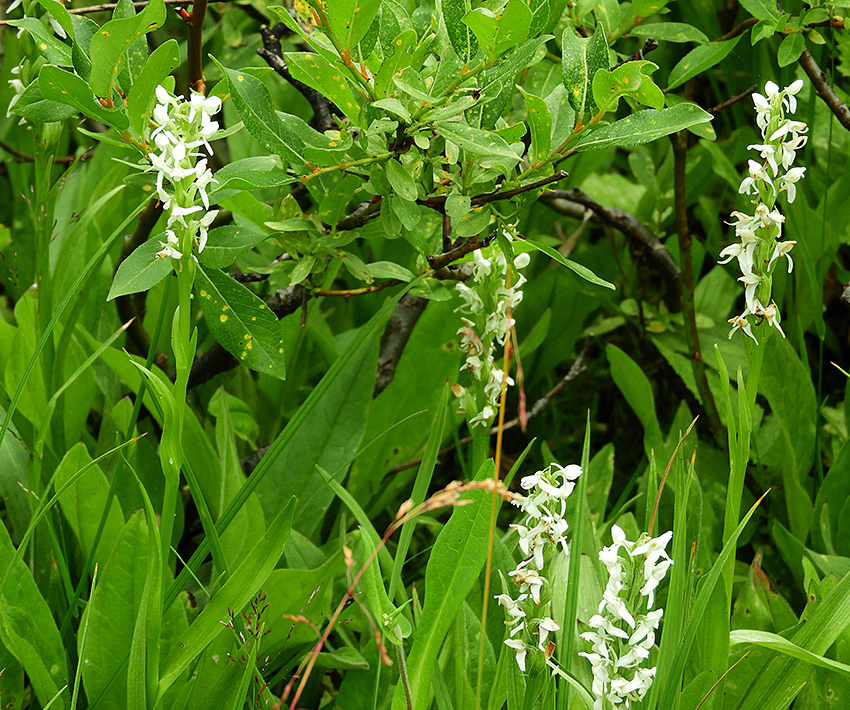
White Bog Orchids (Platanthera dilatata) in a wet spot next to Quinisco Lake.
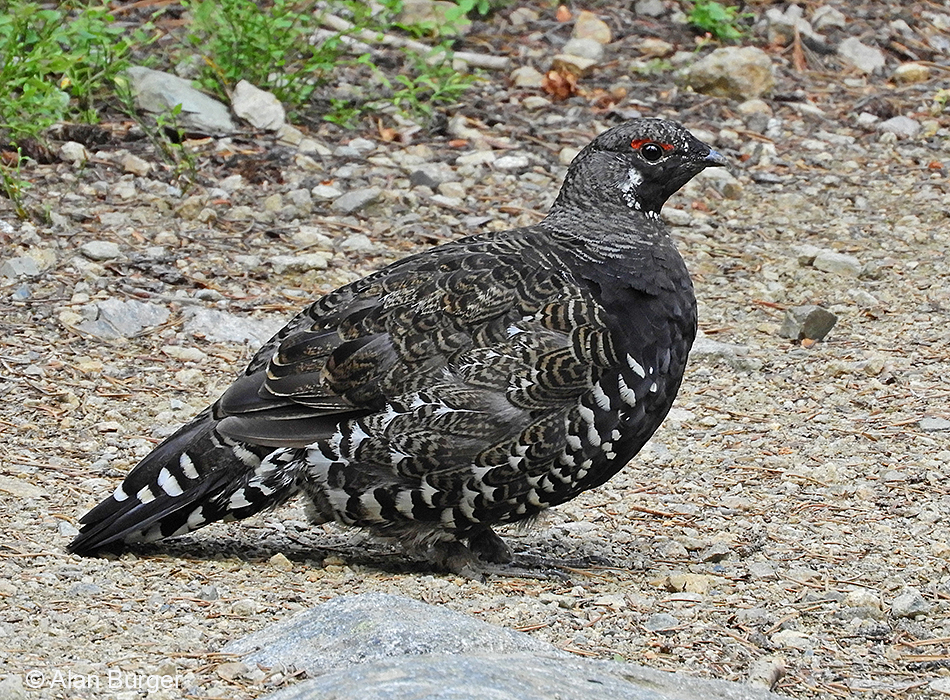
We encountered two of these handsome male Spruce Grouse on the trail between Quinisco and Lake of the Woods.
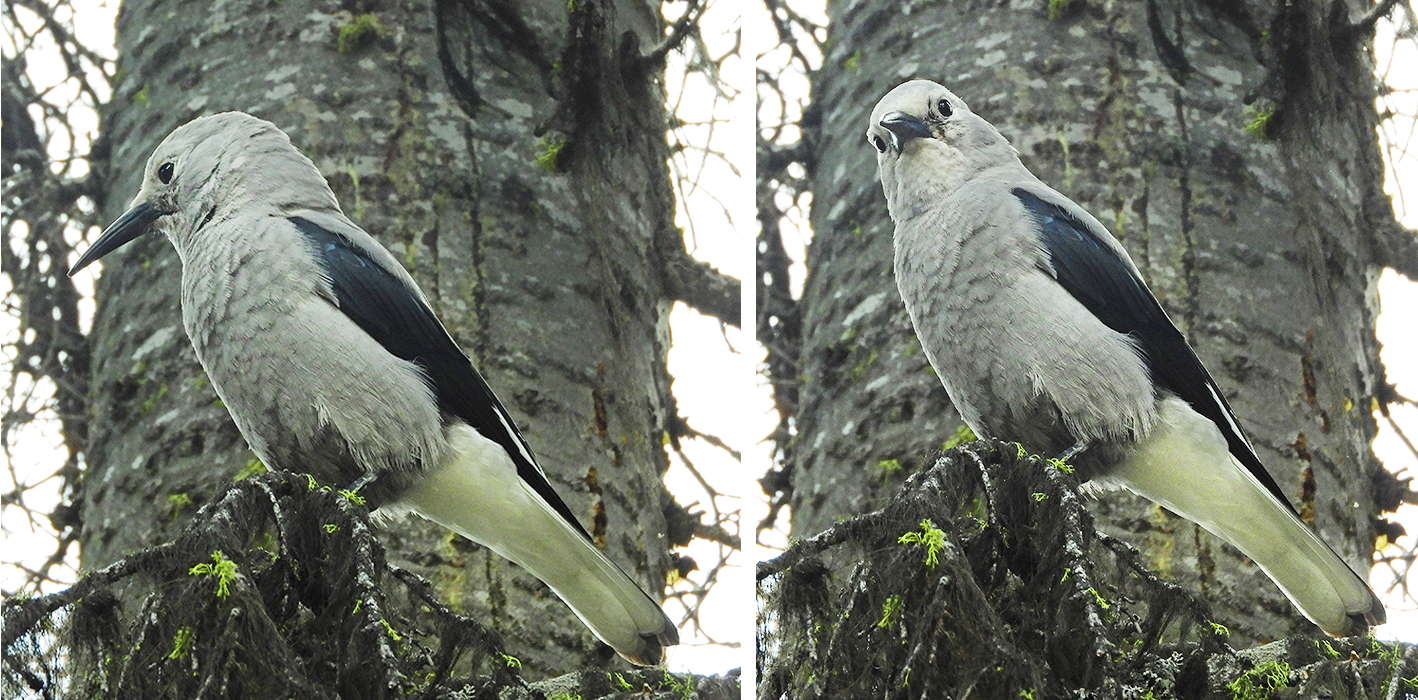
A Clark’s Nutcracker. We watched as this bird took small items of food and cached them in the moss & lichens next to where it was sitting – and then plugged the hidden cache with more lichen.
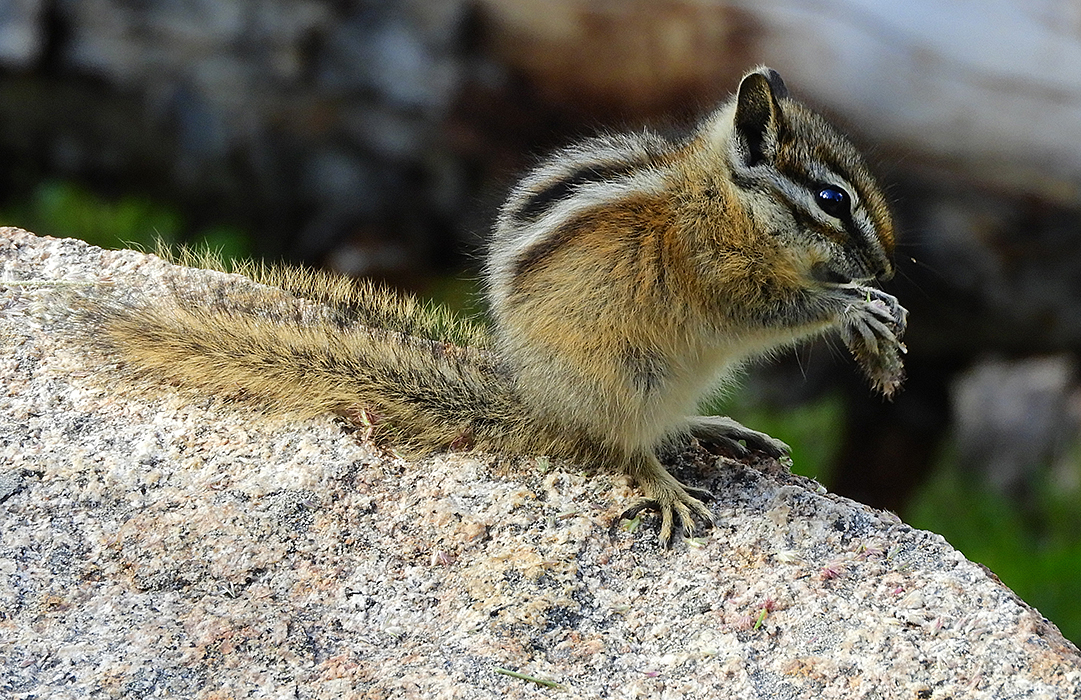
A Yellow-pine Chipmunk – a very common resident of Cathedral Park, especially where it can scavenge scraps from campers. This one is having a more honest meal of a flower head.
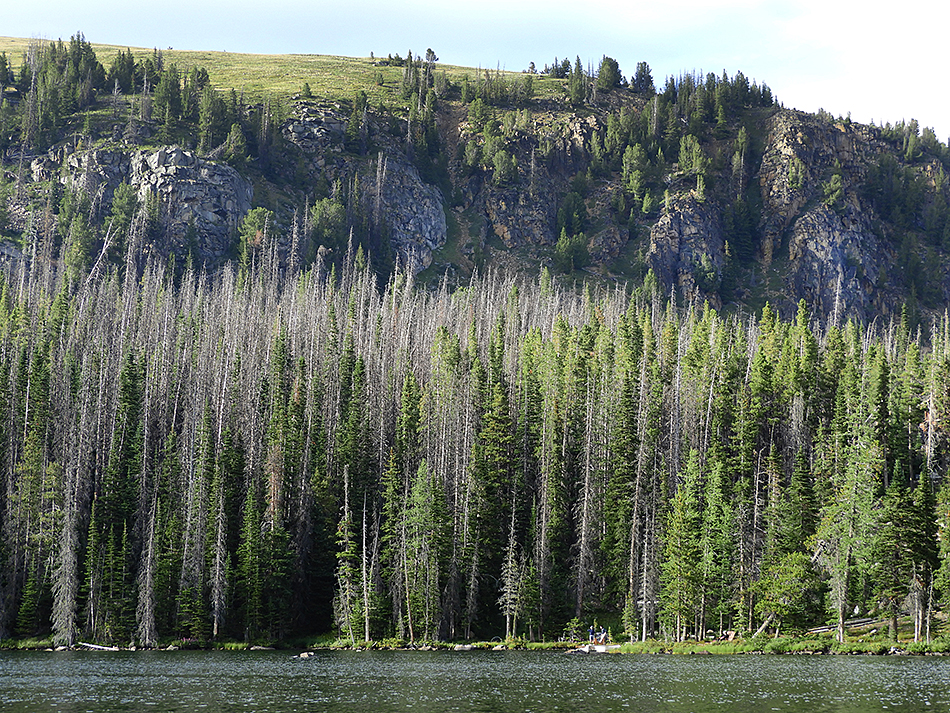
Early morning at Quinisco Lake looking up at the slope where the Diamond Trail crosses.
On our second day, Chris and I did the 8+ km Diamond Trail loop while Duncan and his sons James and Jake did the more strenuous 16 km Rim Trail loop.
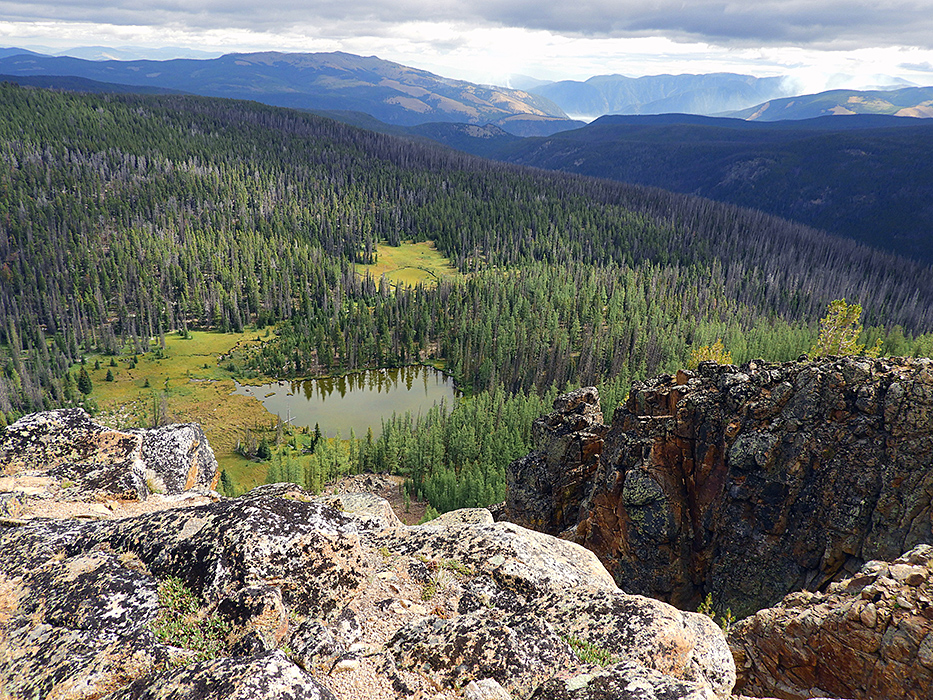
View from the high point on the Diamond Trail loop, looking down on Scout Lake. Notice the smoke in the valleys from two nearby wildfires – fortunately far enough away not to cause us alarm. But 4 days after our trip this small fire erupted into a massive fire causing the park to be closed and evacuation of the Lodge and all campers in the park.
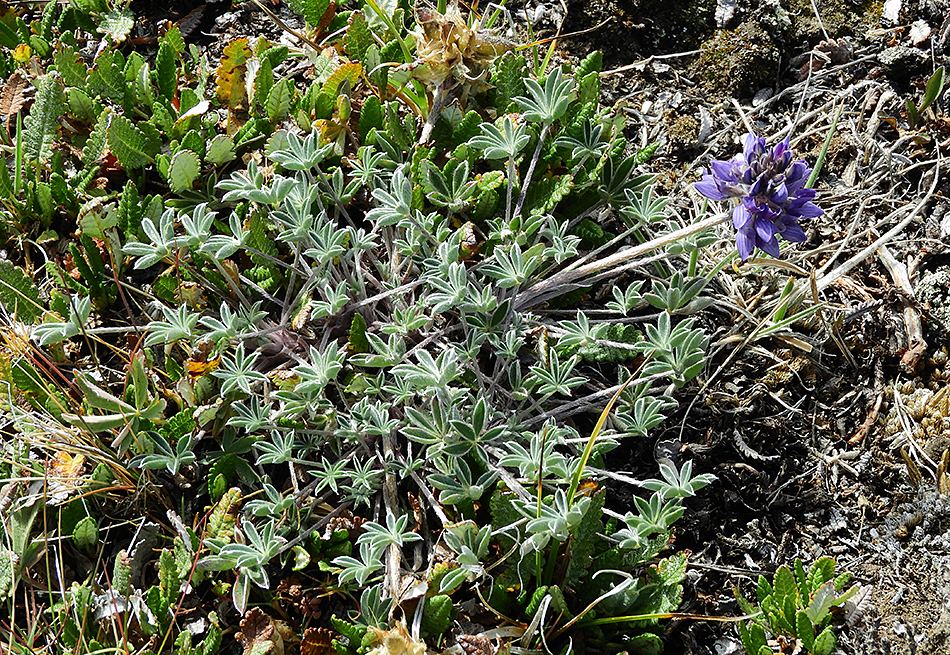
A Dwarf or Alpine Lupine (Lupinus lepidus) on the gravelly alpine of the Diamond Trail.
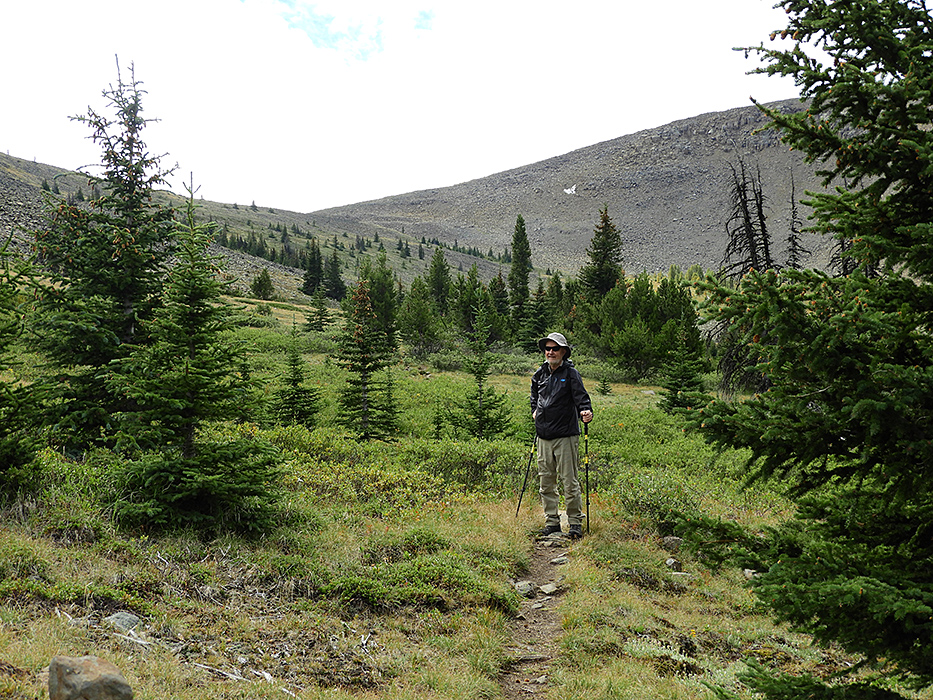
Chris on the Diamond Trail.
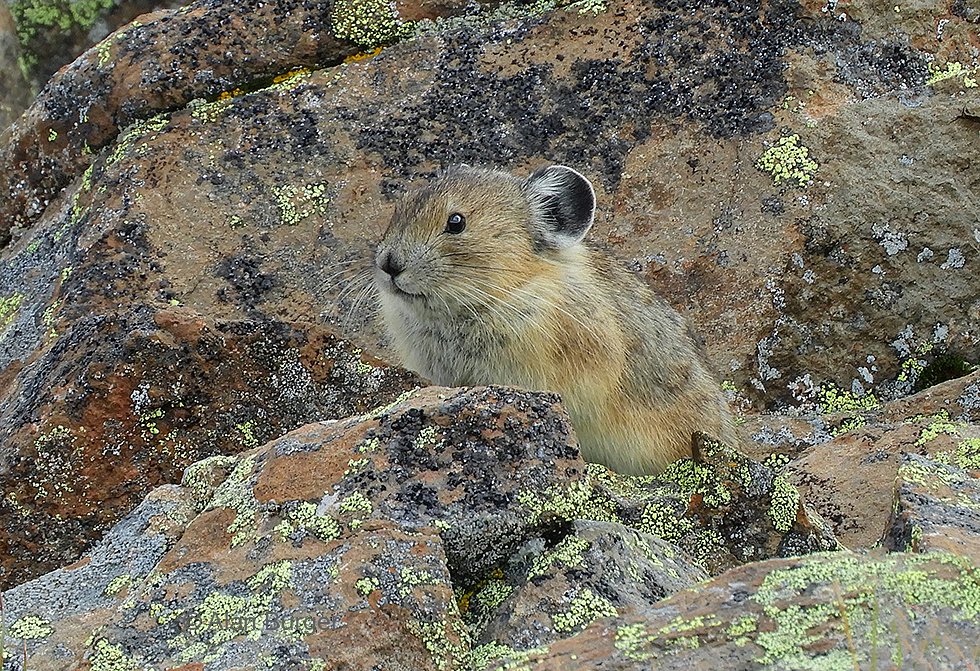
Pikas were very active in the boulder fields in many places. These little critters look like guinea-pigs but they are actually related to hares and rabbits (Order Lagomorpha).
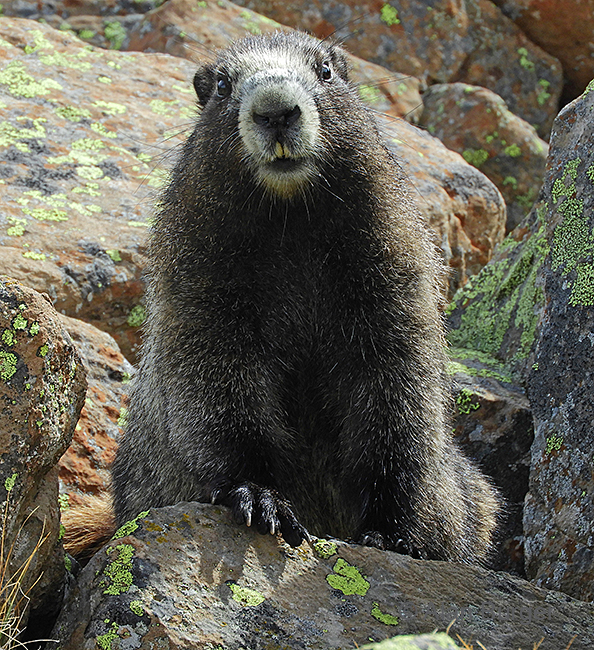
A Hoary Marmot. Even though it was not even mid-August some of these big rodents were already hibernating and we saw relatively few that were still out and about, putting on fat to see them through the winter.
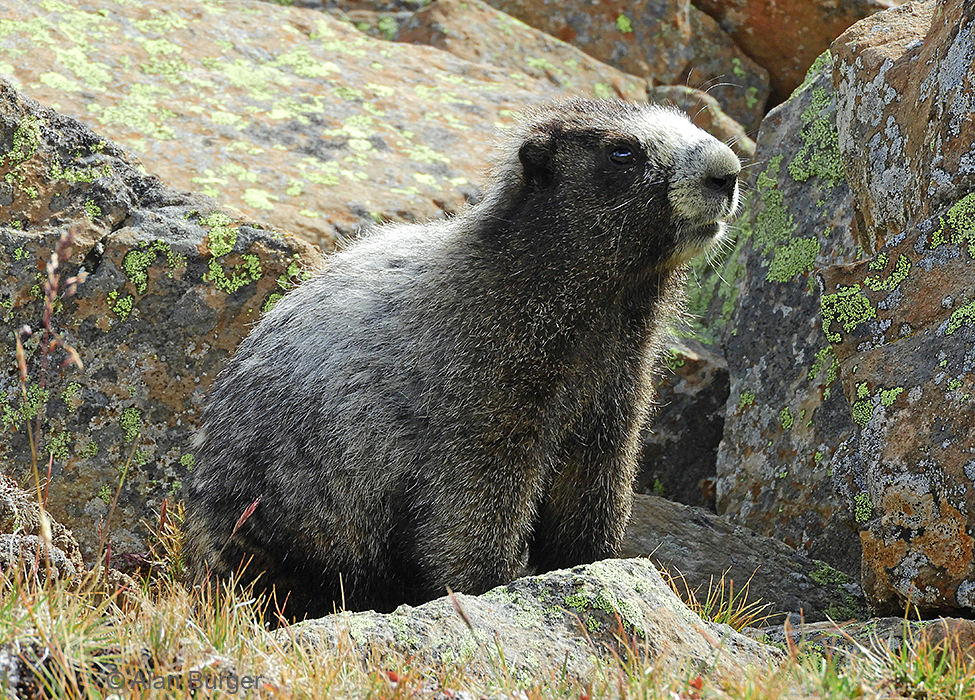
Hoary Marmot.
The alpine and subalpine meadows of Cathedral Lakes Park are renowned for their summer wildflowers – and although they appeared to be fewer than in some previous years they were still profuse and a delight.
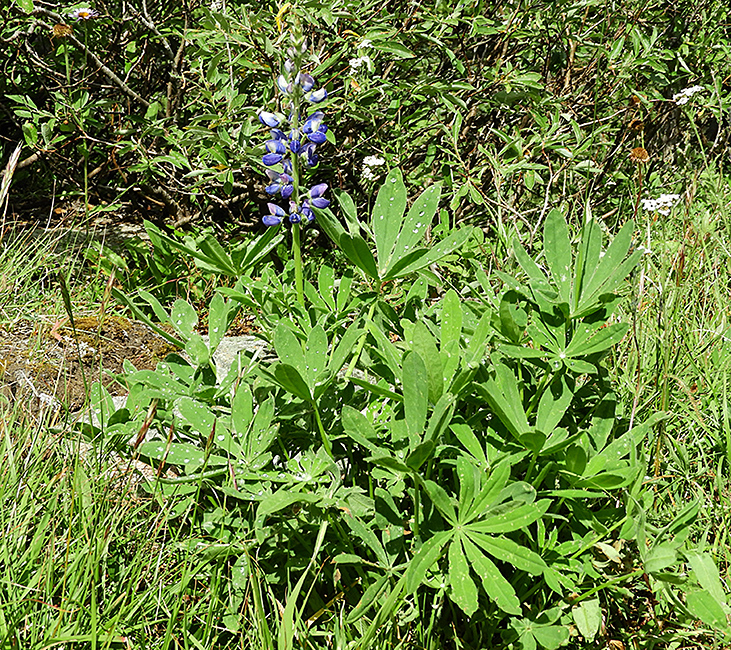
A Broadleaf Lupine (Lupinus latifolius) on the Diamond Trail.
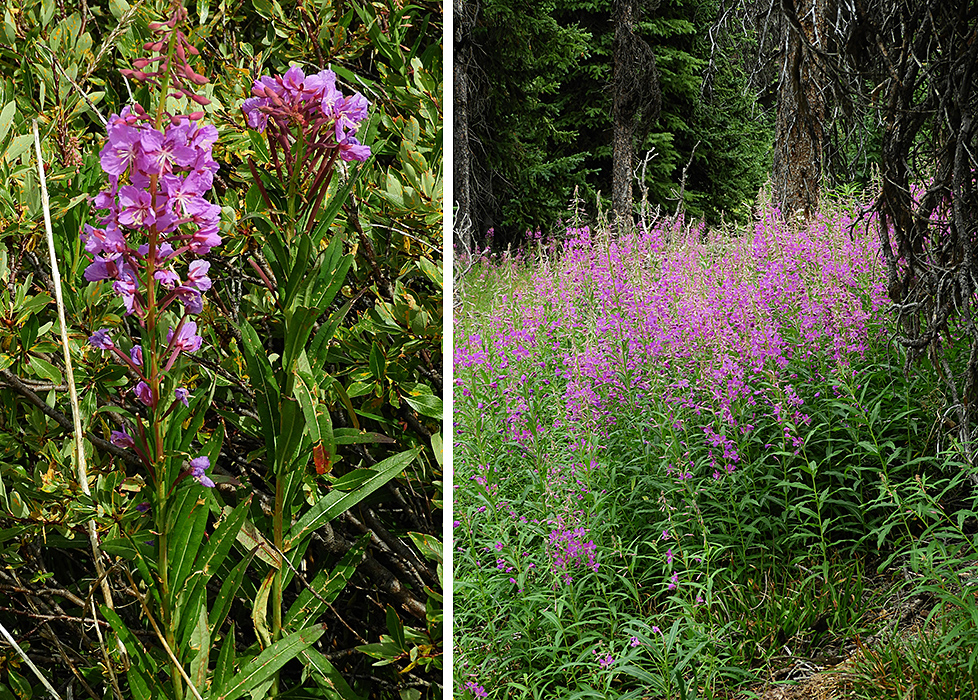
Fireweeds (Chamaenerion angustifolium) were in full splendour at the time of our visit.
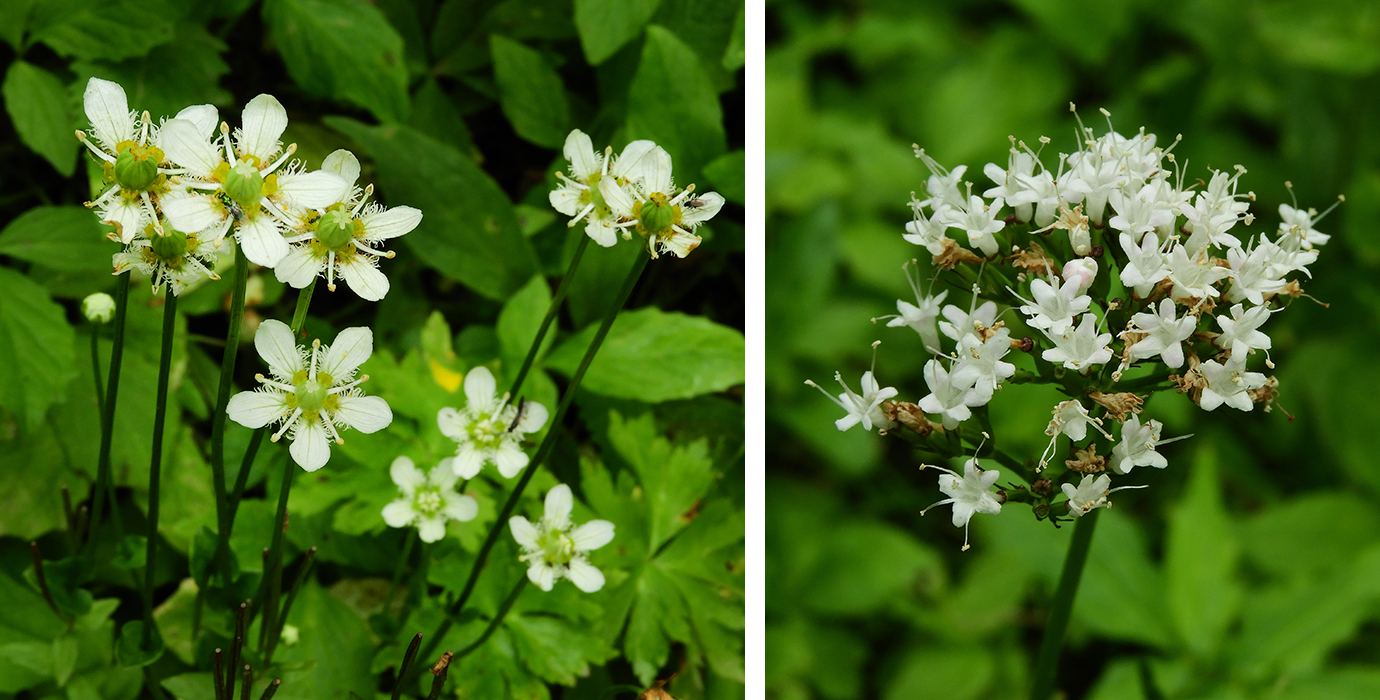
A couple of white-flowered species: Fringed Grass of Parnassus (Parnassia fimbriata) on the left and Sitka Valerian (Valeriana sitchensis) on the right.
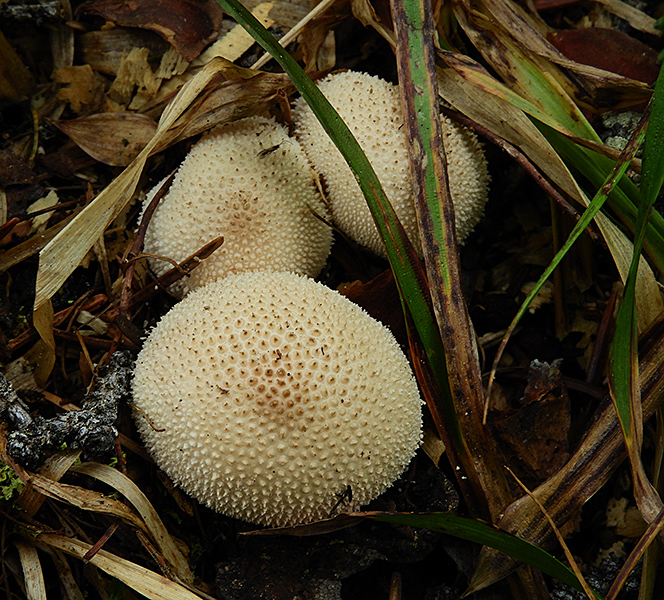
We encountered numerous mushrooms – these are probably Lycoperdon perlatum puffballs.
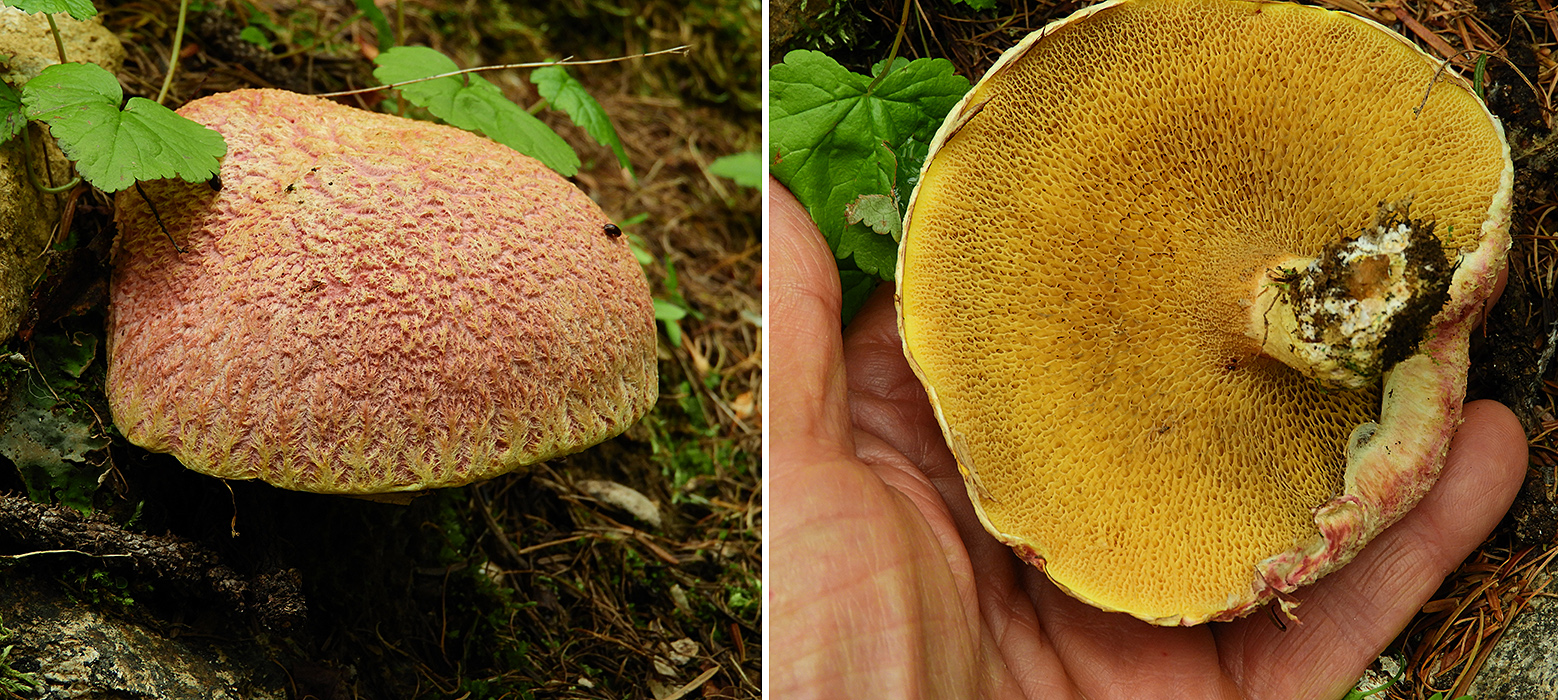
A bolete mushroom – likely Suillus ochraceoroseus. And no – we didn’t try eating any.
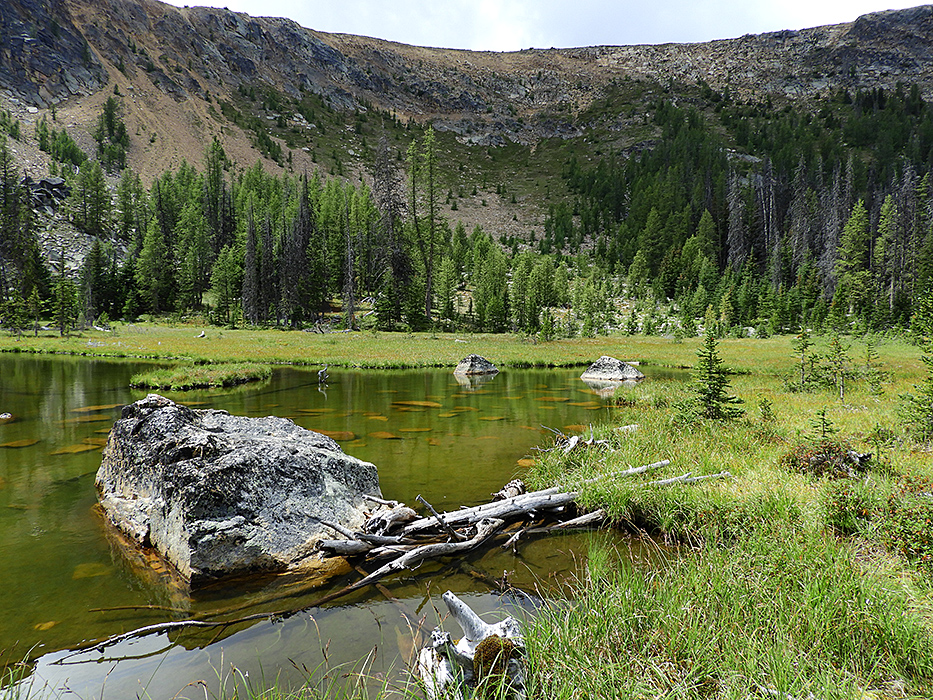
Scout Lake on the Diamond Trail – a lovely spot for lunch and a comfy seat in the grassy lake edge.
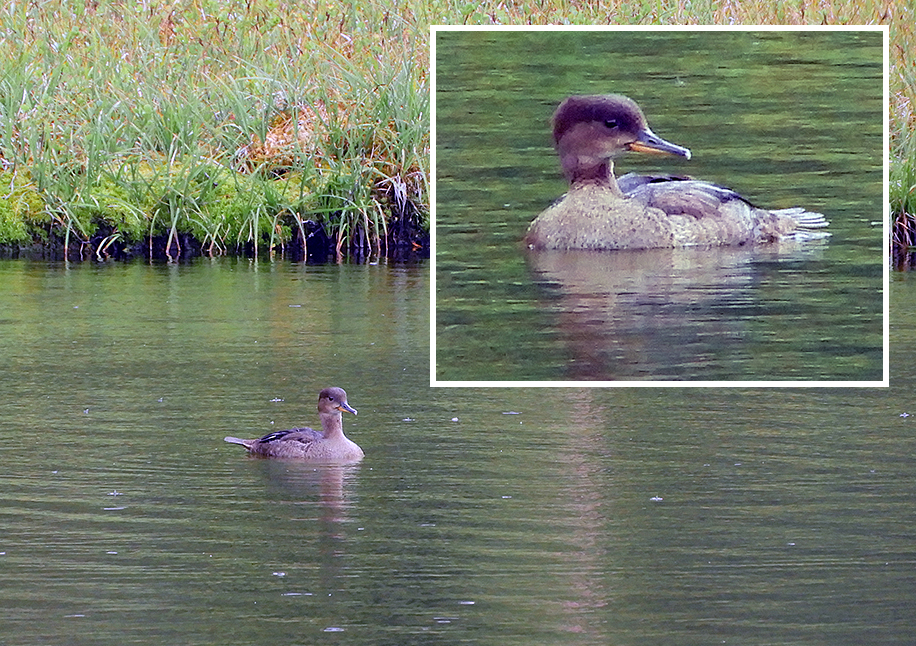
We were surprised to see this Hooded Merganser on Scout Lake – the dark eye indicates that it is a juvenile.
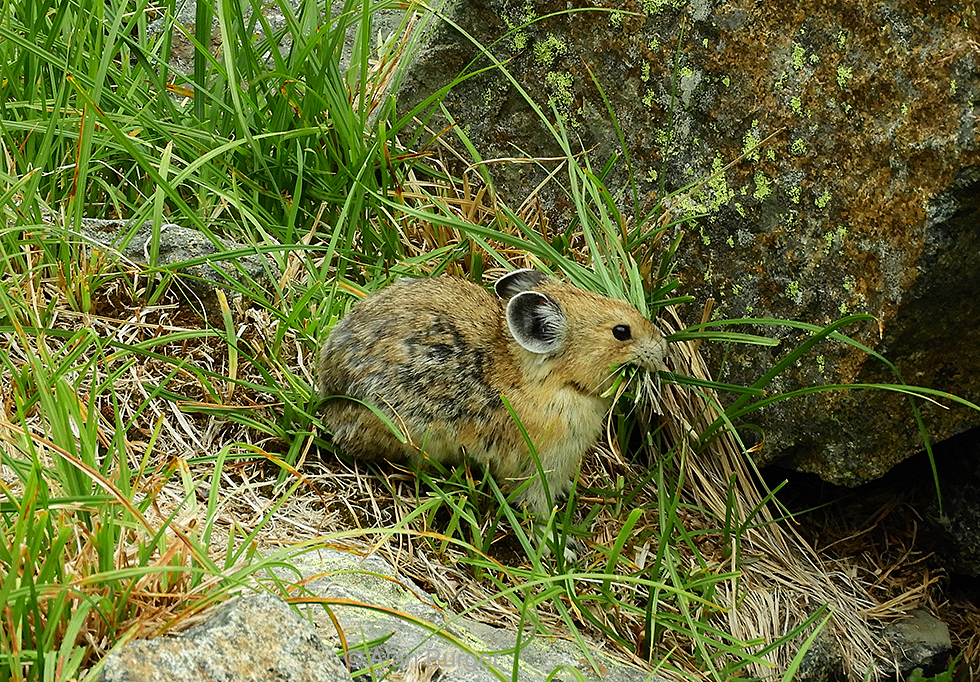
A Pika in the meadow bordering its rocky hideout, gathering grass for its winter haystack.
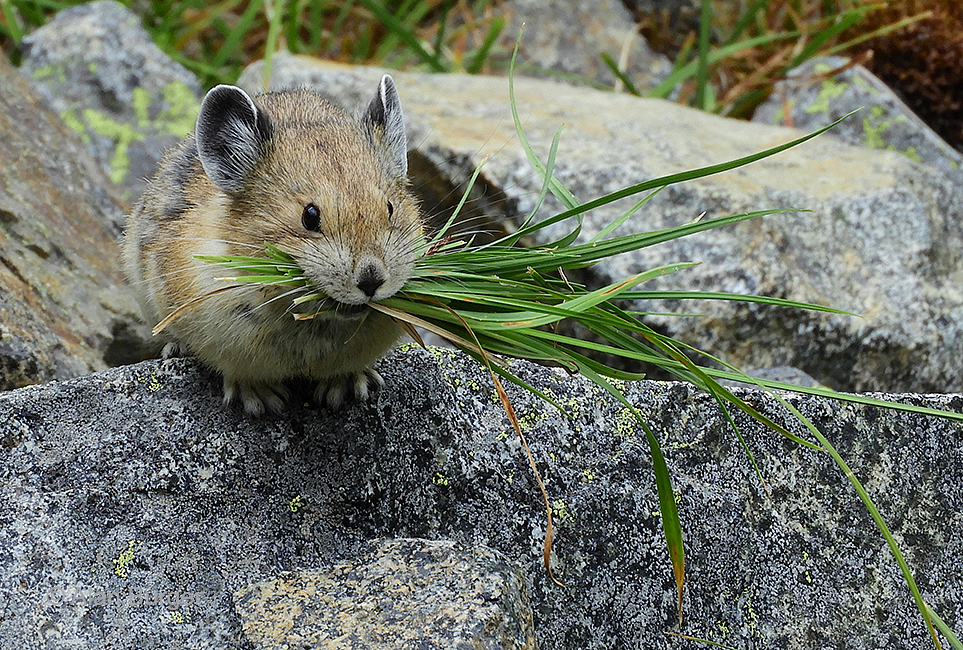
Pikas spend much of the summer gathering grass and herbs and laying them out on the rocks to dry – providing food for the long winters. Unlike marmots, ground-squirrels and chipmunks, Pikas do not hibernate and remain active through the winter in their bouldery habitat underneath the snow.
On August 10th we shouldered our heavy packs and headed away from the Core area. Our destination on that day was Haystack Lake, via Goat Lake, Boxcar and then a long series of ups and downs along un-named ridges.
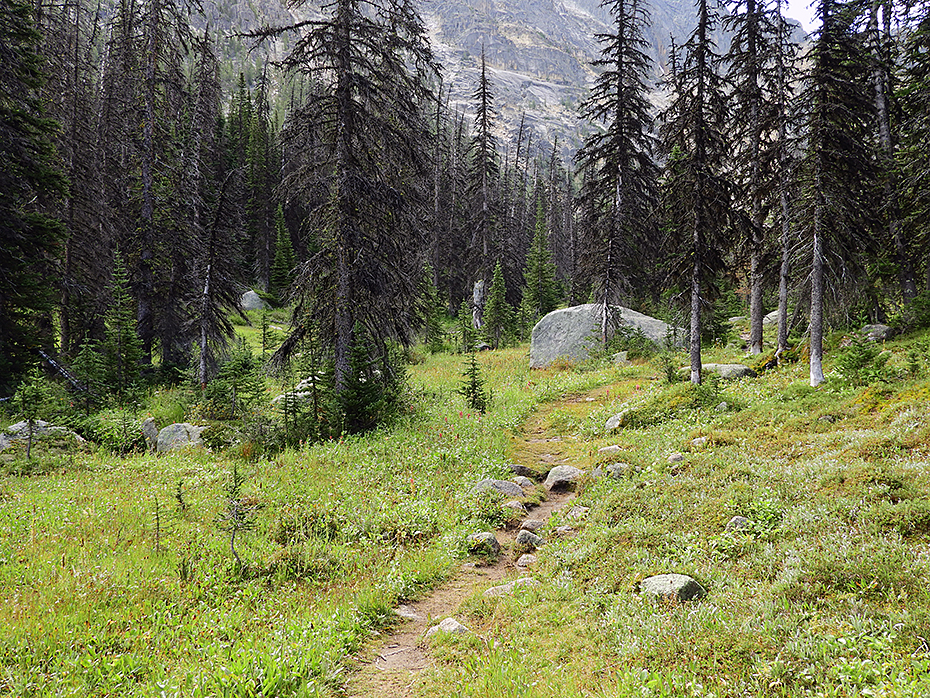
The valley-bottom trail heading to Goat Lake.
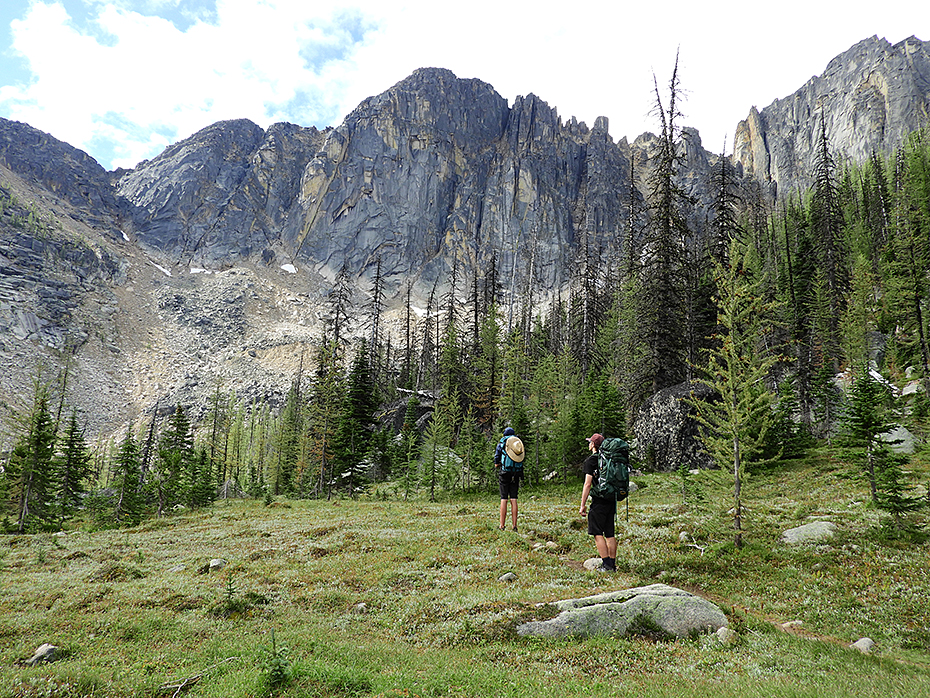
Jake and James on the trail approaching Goat Lake with the jagged peak of Matriarch Mountain behind.
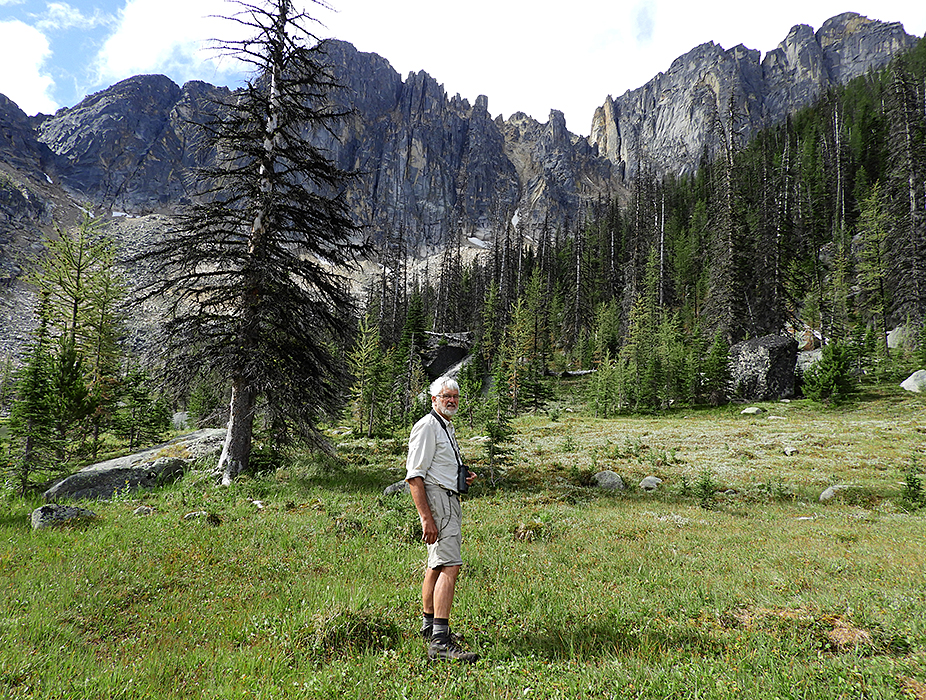
Alan next to Goat Lake with Matriarch and Macabre peaks behind.
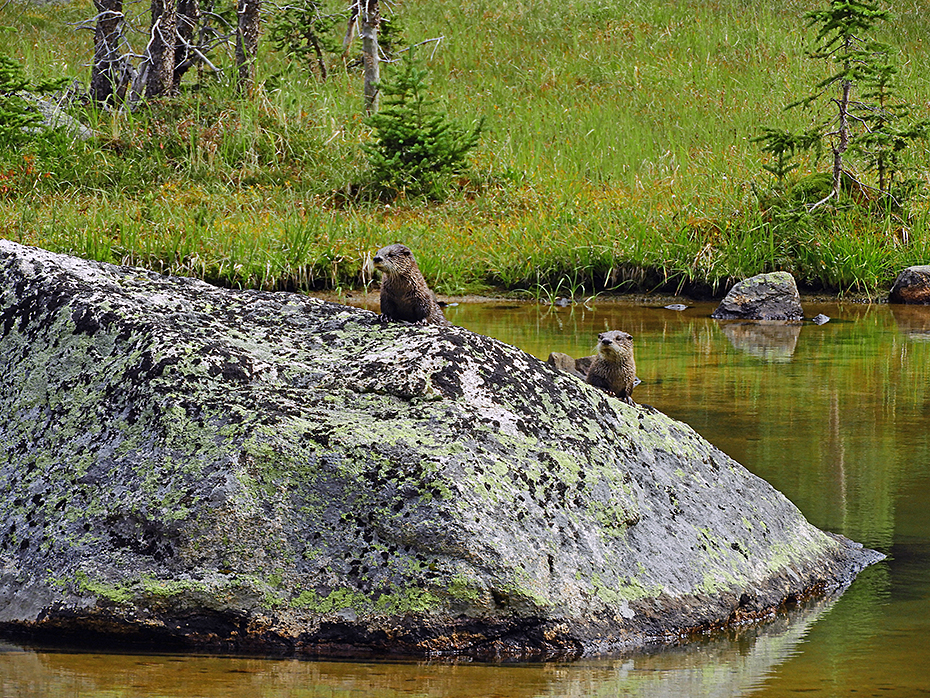
These young River Otters, probably siblings, were an unexpected sight at Goat Lake. There were plentiful small trout in the lake to keep them going – at least until the lake freezes over in winter.
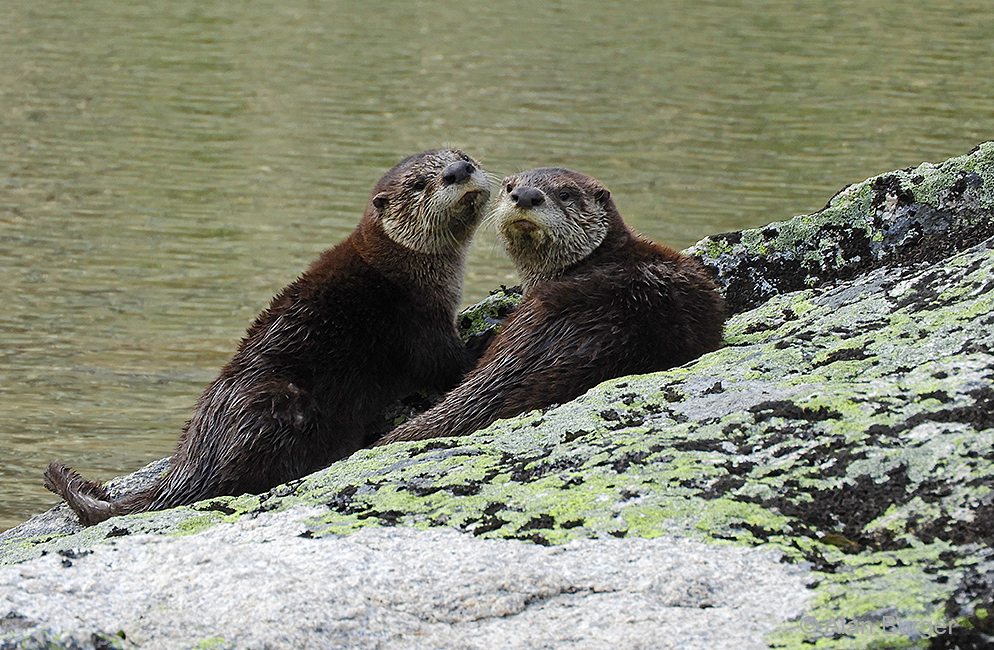
River Otters at Goat Lake
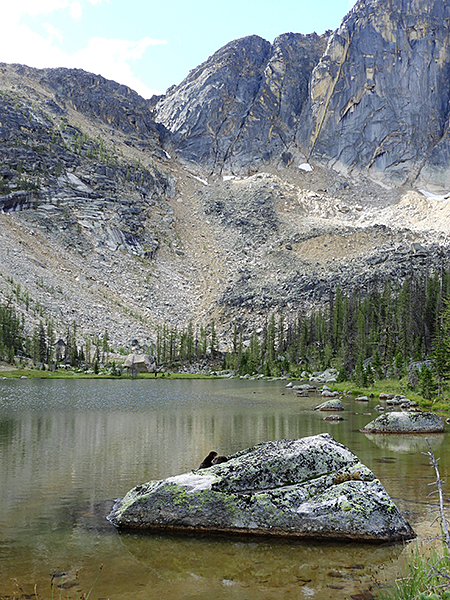
A view of Goat Lake with the pair of otters on the foreground rock. If you look carefully you can see James fishing from the far shore.
From Goat Lake we had a long uphill slog to the saddle between Lakeview Mountain and Boxcar and then further up to the Boxcar plateau.
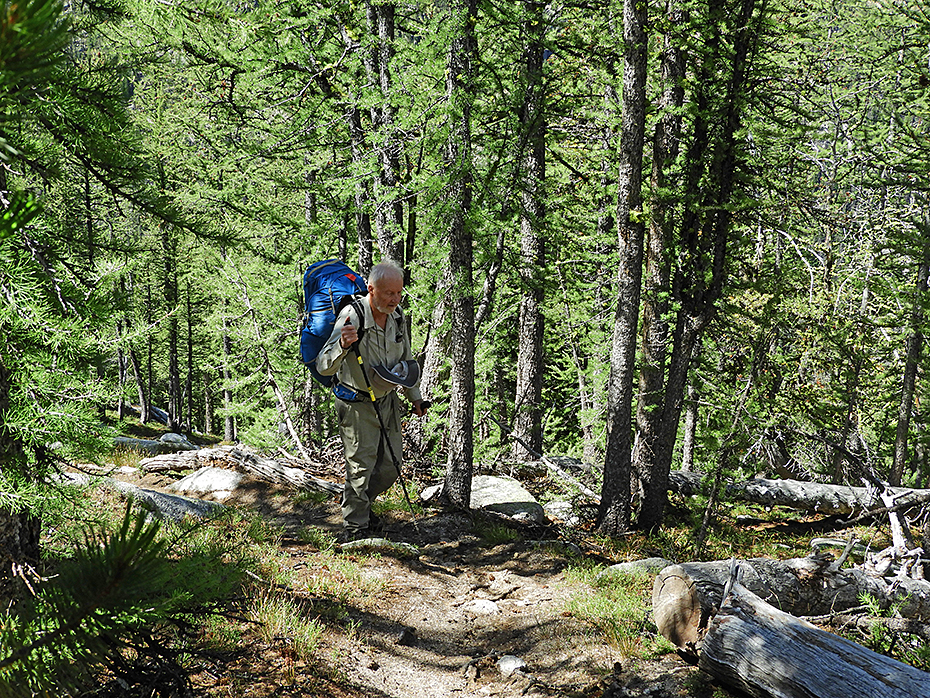
At first the trail goes up slopes covered with open larch forest.
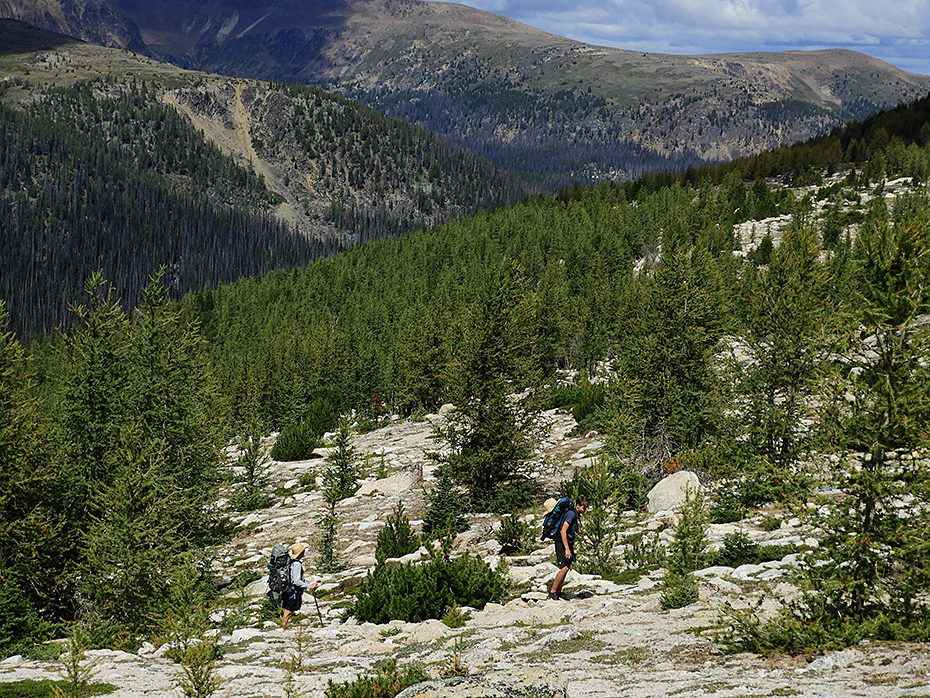
Duncan and Jake approaching the treeline above the larch trees.
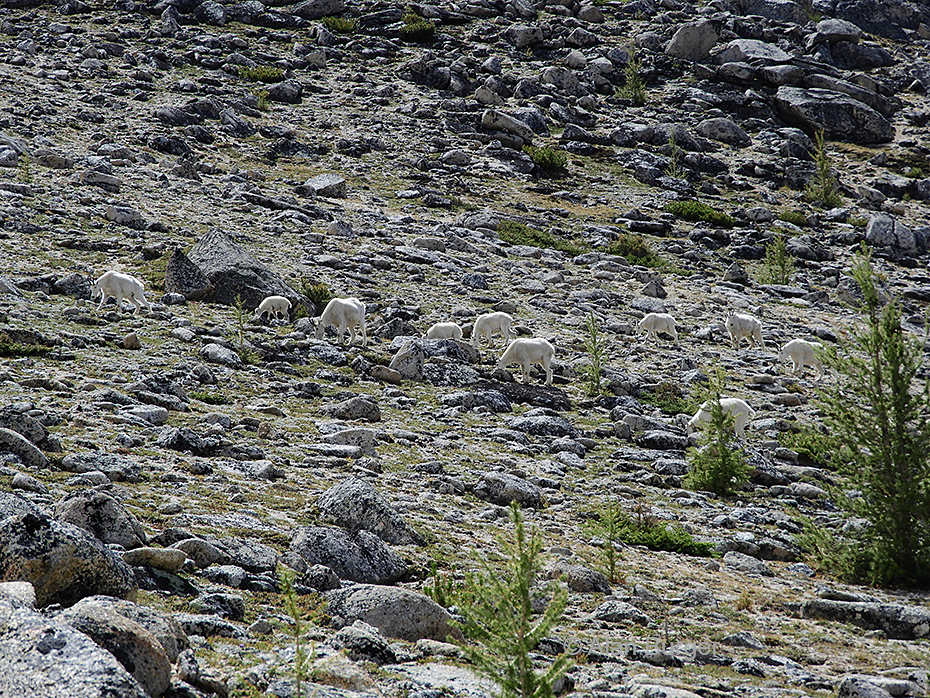
Above the larch forest we encountered a large herd of Mountain Goats – females and their offspring.
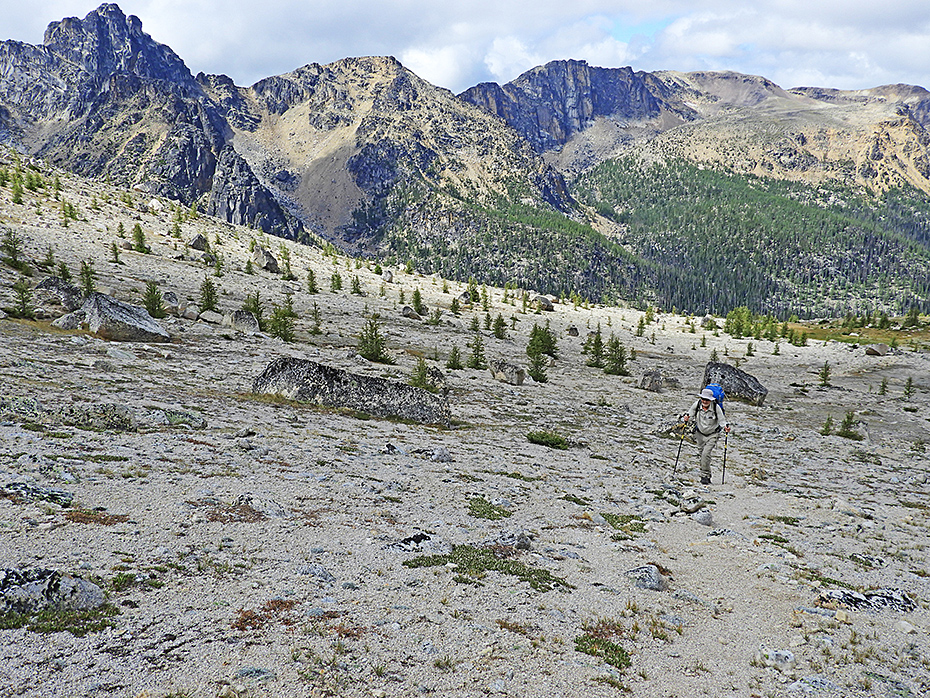
Chris heading up the final open scree to the saddle. The dark mountain immediately beyond Chris has the Stone City, Smokey-the-Bear and Cleft formations popular with many hikers in Cathedral Park.
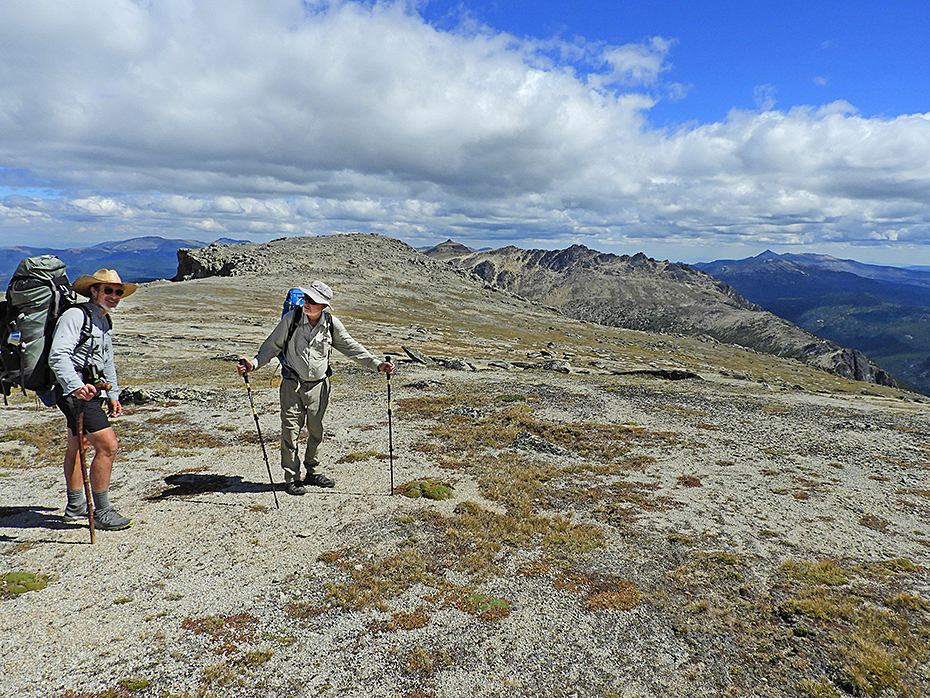
Duncan and Chris on the Boxcar plateau. The rounded peak with a summit pimple in the distance is Haystack Mountain – our destination for this day.
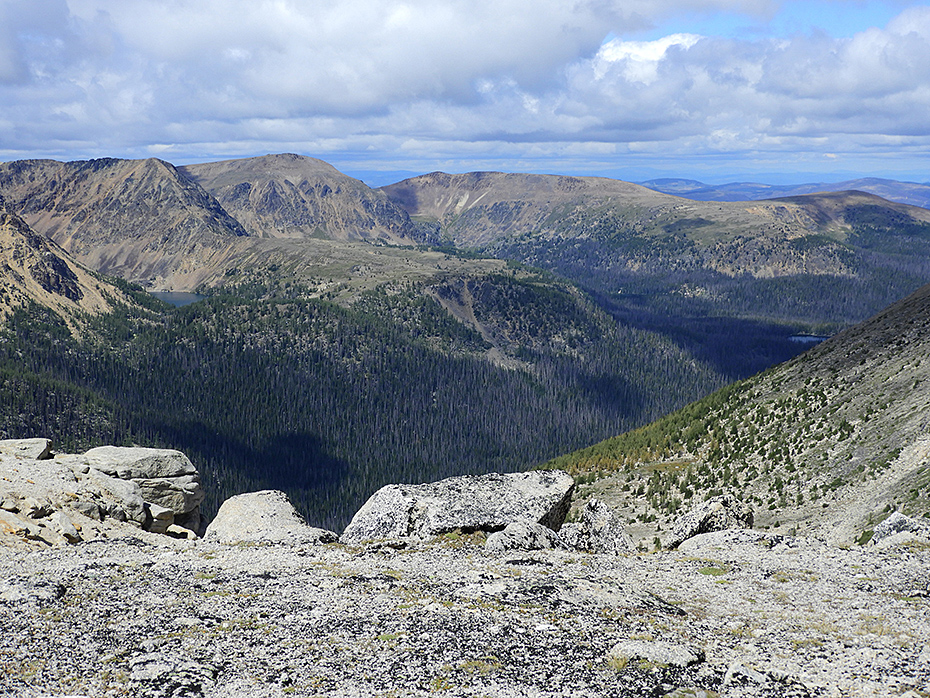
View from the Boxcar looking back west at the core area of Cathedral Lakes Park, with (L to R): Pyramid Peak with Ladyslipper Lake below it, Quinisco Peak, Red Mountain, and Scout Mountain with the lodge and Lake of the Woods in the far right valley.
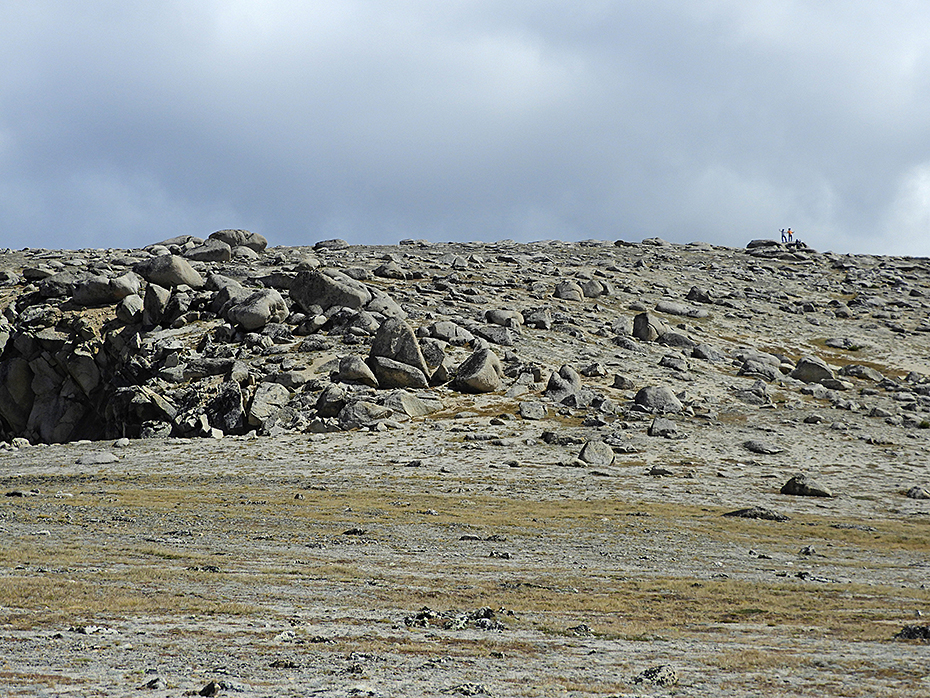
The Boxcar plateau. On the rocky outcrop to the east you can see some hikers – the only 3 people we met in three days of hiking.
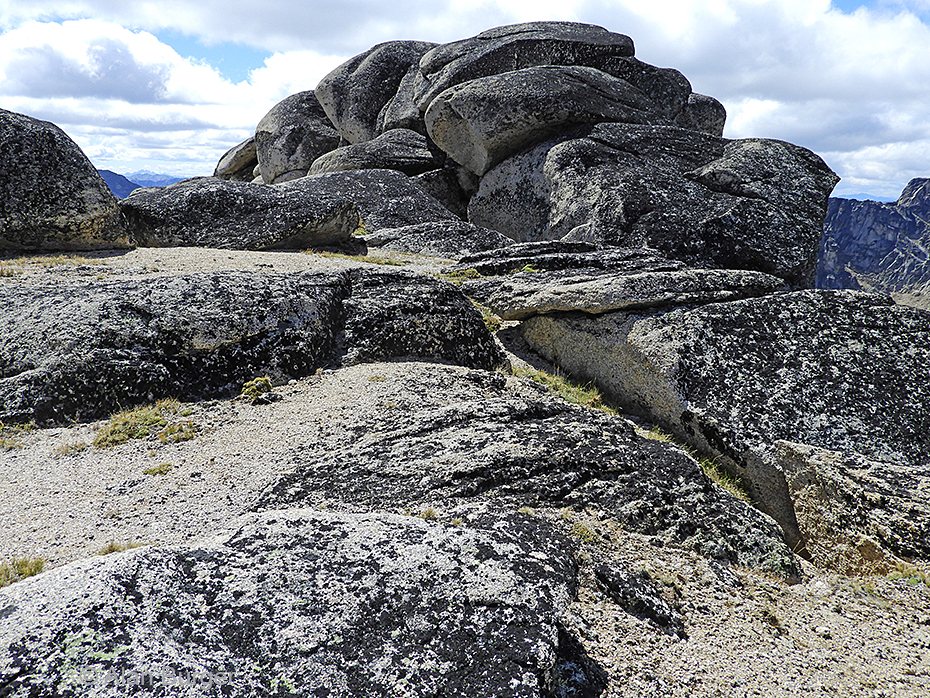
Some of the weather-sculpted sandstone rocks at Boxcar.
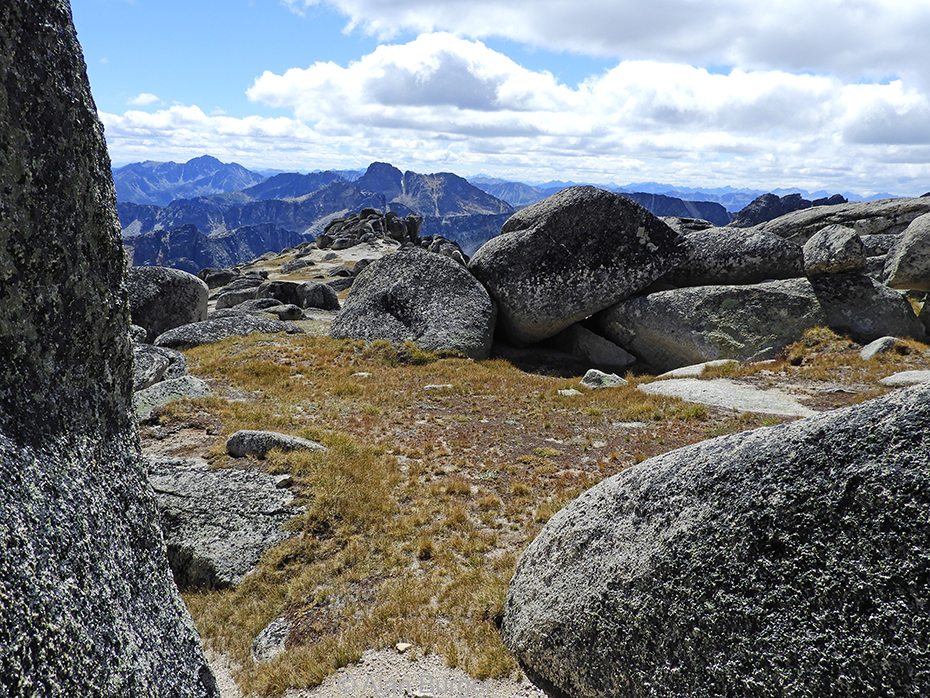
Boxcar sandstone formations in the foreground, Mount Ewart in the centre middle distance and the mountainous wilderness of Washington State beyond.
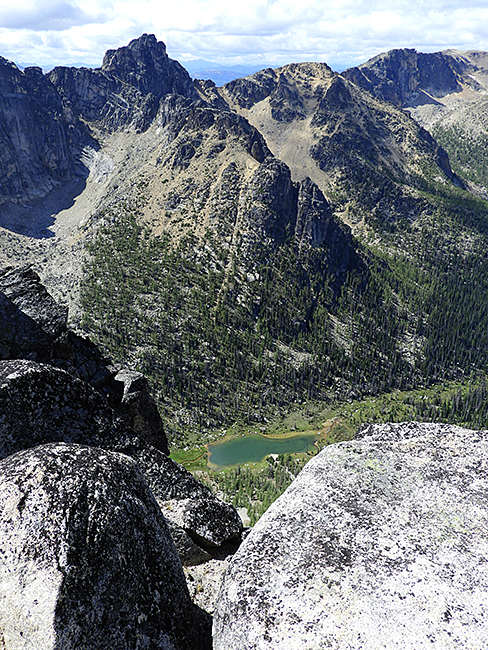
Looking down from Boxcar at Goat Lake – getting from there to here was a hard two-hour uphill hike.
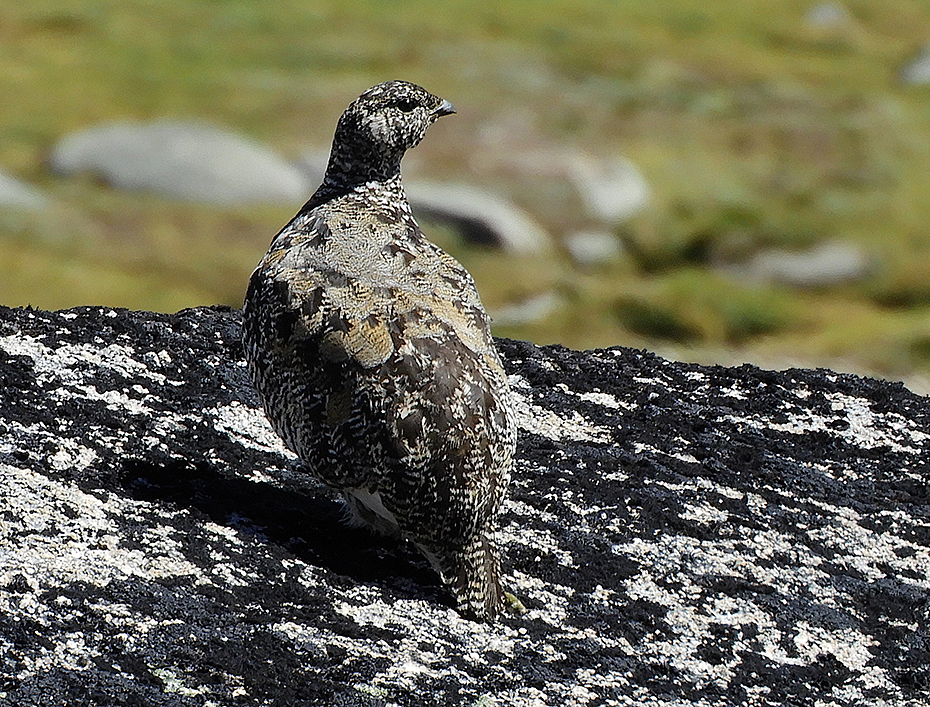
What appeared to be a grey rock turned out to be a female White-tailed Ptarmigan. We were on the lookout for these high-alpine grouse so it was great to find some.
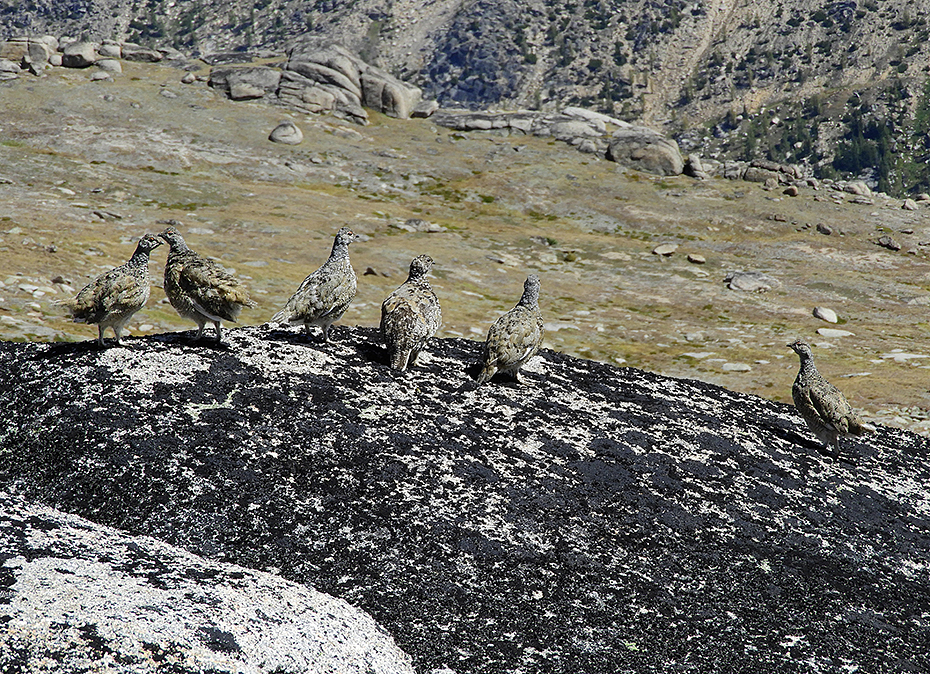
The female ptarmigan was joined by her five almost full-grown chicks.
From Boxcar we headed eastward into less-traveled areas beyond the core area but still within Cathedral Lakes Provincial Park. The US/Washington border is just a km to the south.
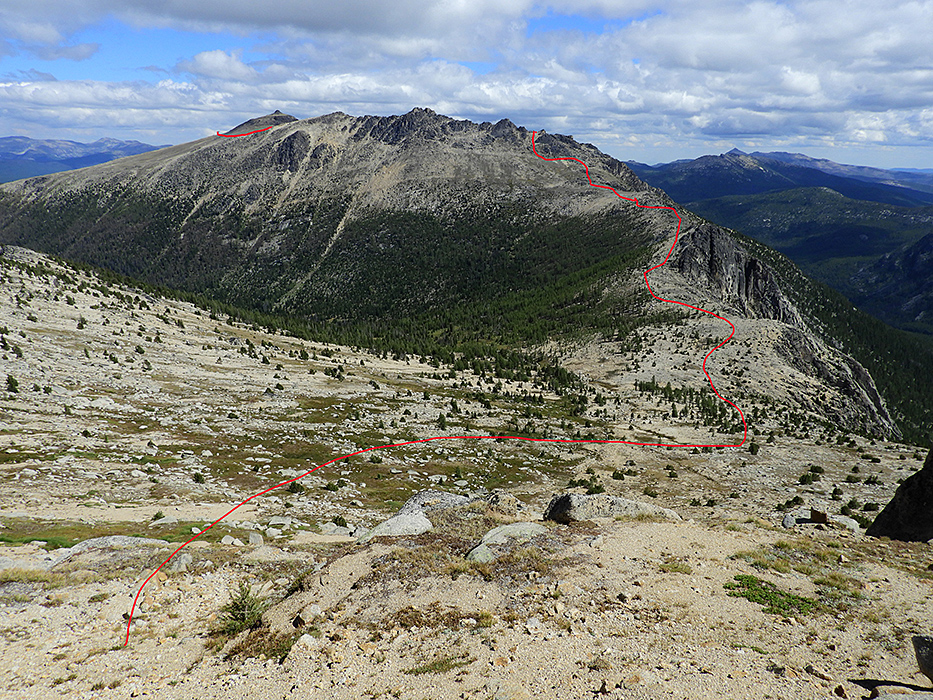
Our route from Boxcar to Haystack Mountain – a long drop down, up-and-down along the lower ridge, a steep climb up to the big (un-named) mountain ridge, and then behind that ridge to the northwest side of Haystack Mountain and eventually around that mountain to Haystack Lakes.
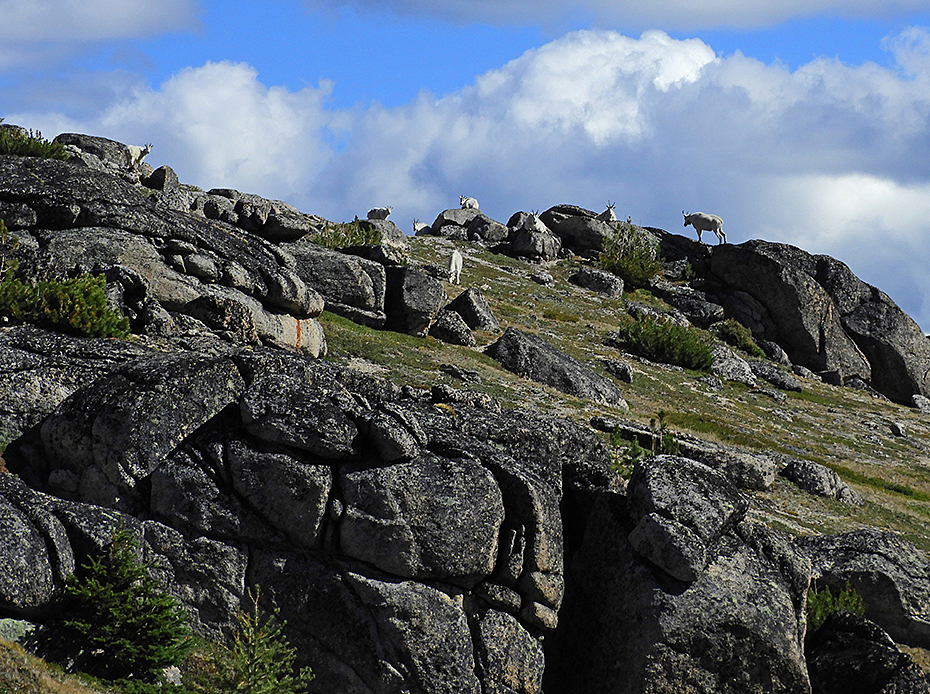
Another herd of Mountain Goats – again females with young ones.
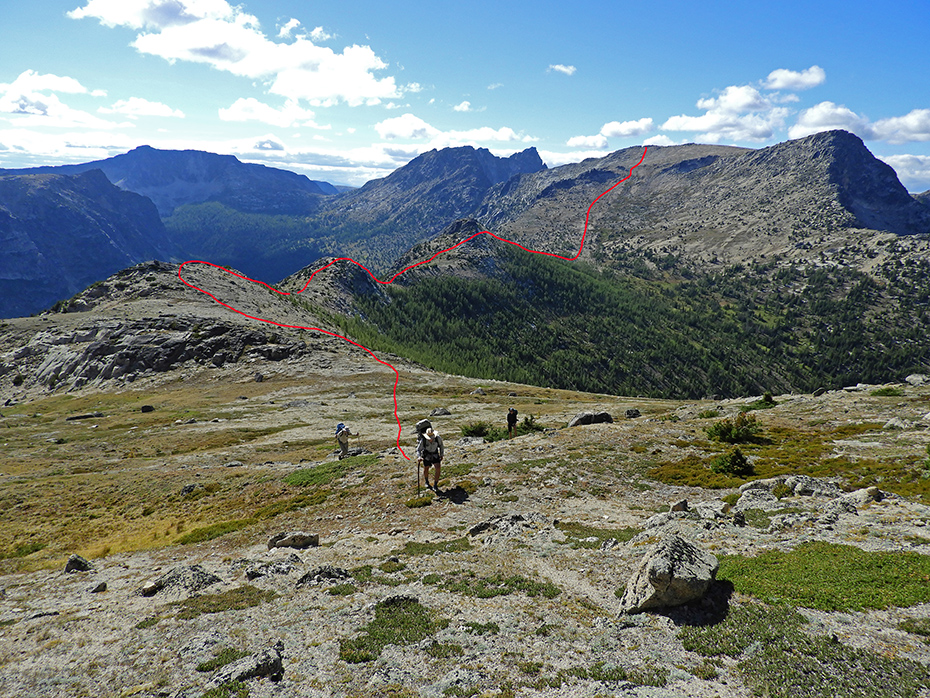
Looking back from the big mountain ridge at our route from Boxcar.
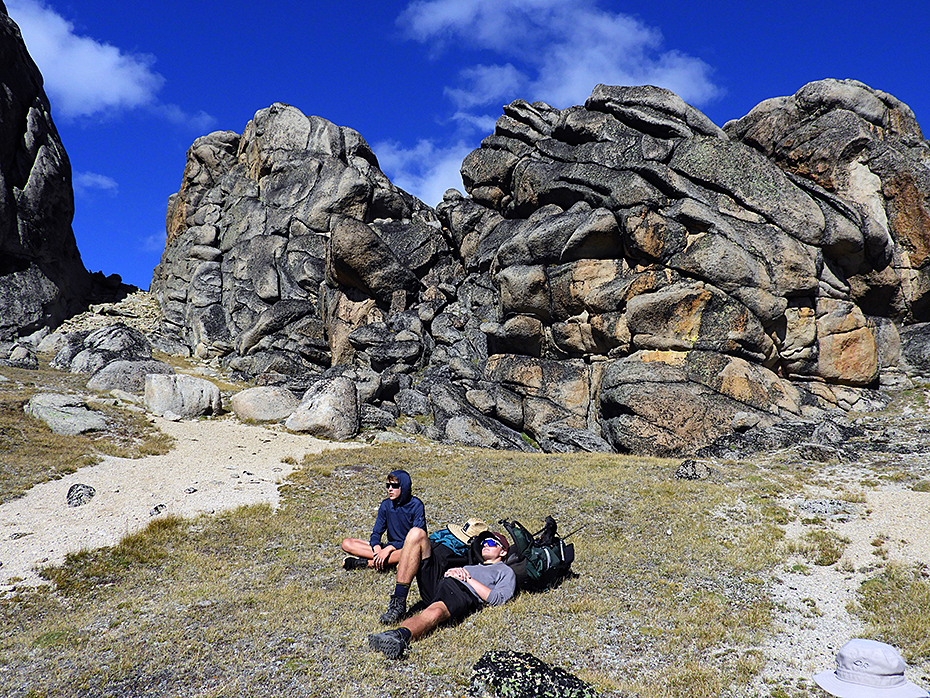
Jake and James relax after the steep climb up to the major ridge.
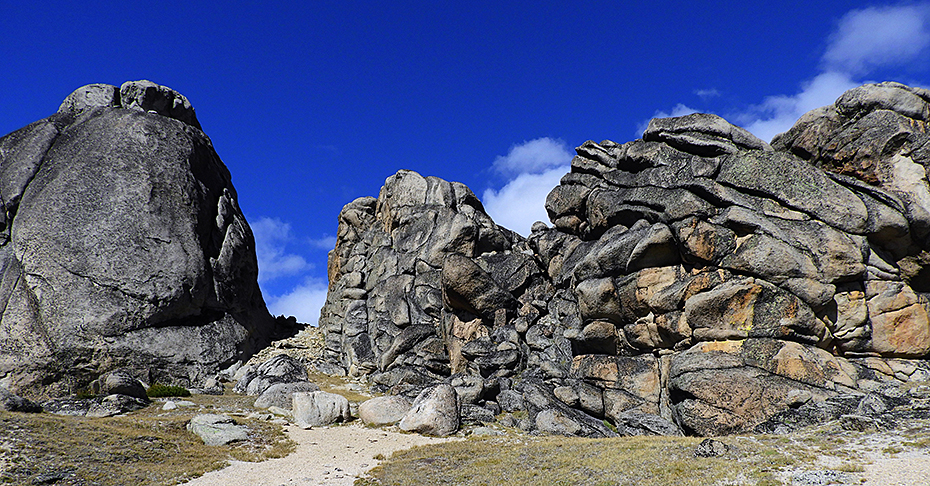
Wonderful sandstone rock formations once again. Our route took us up and through the gap on the left.
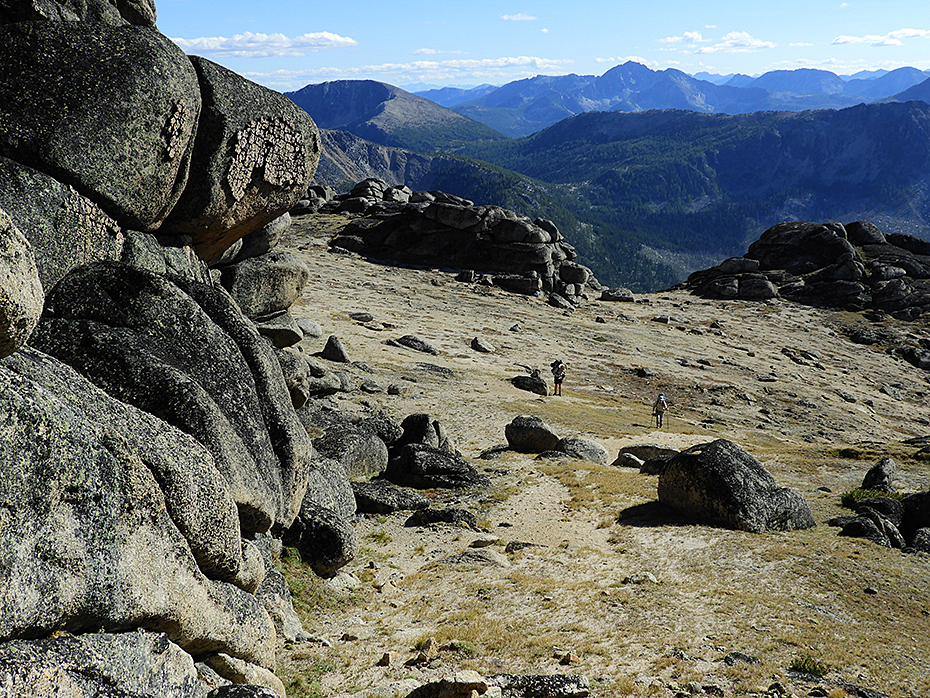
Looking back to the southeast from the cleft in the sandstone.
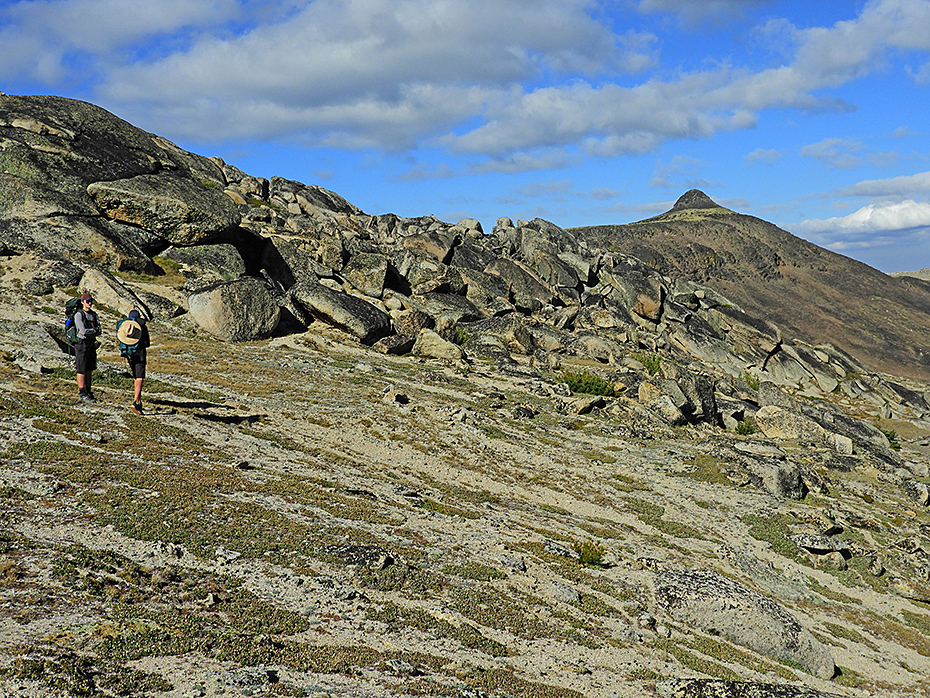
Contouring around the east side of the big mountain ridge, heading for Haystack Mountain. The geology here is interesting – this big ridge is yellow-grey sandstone and there is a sudden transition to the black basalt that makes up Haystack Mountain.
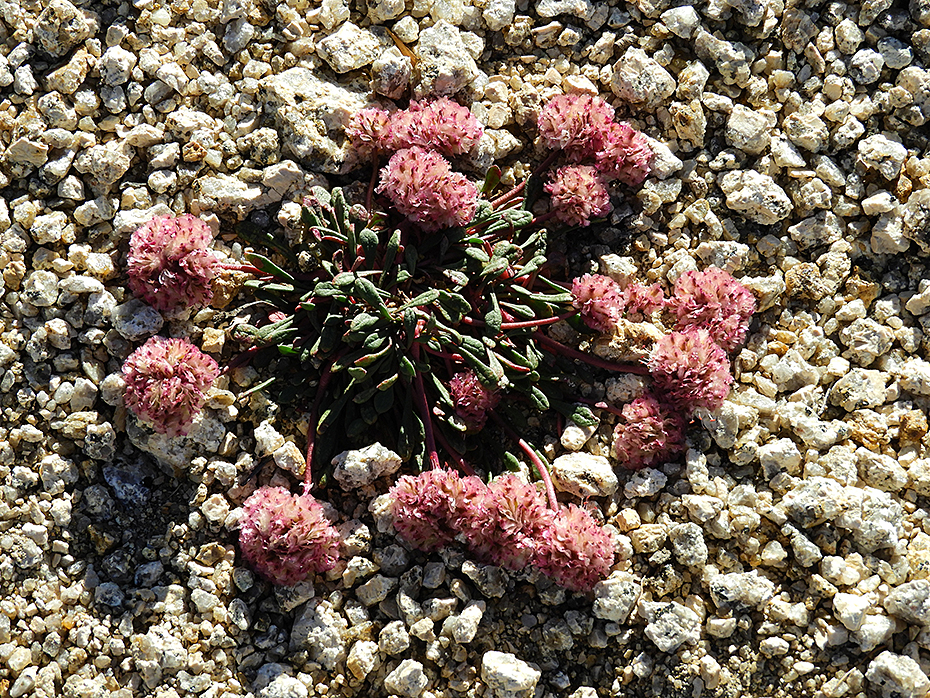
This little plant, Umbellate Pussypaws (Calyptridium umbellatum) thrives in the most inhospitable-looking habitat – loose sandstone gravel in the high alpine areas.
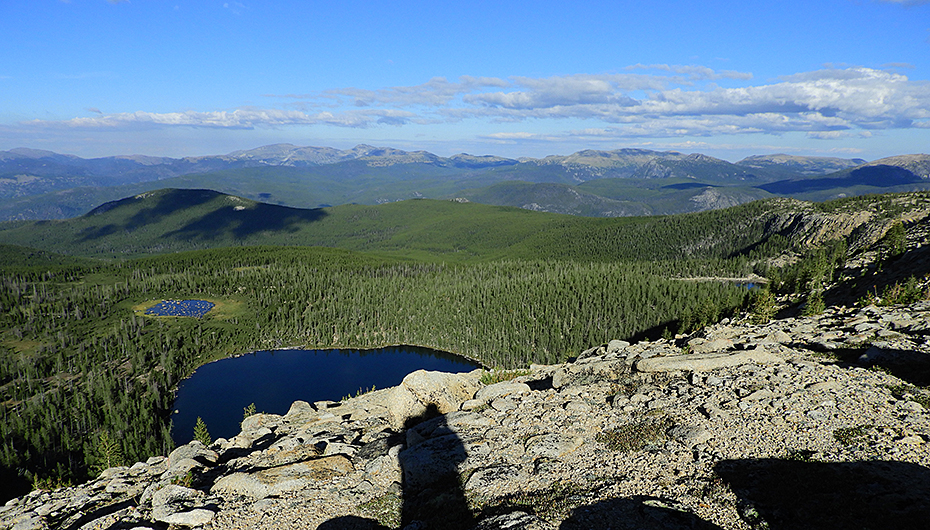
Finally a glimpse of the Haystack Lakes from the slopes of Haystack Mountain. Three of the four lakes are visible. Our camp was in the trees bordering the lake at the left edge of the photo.
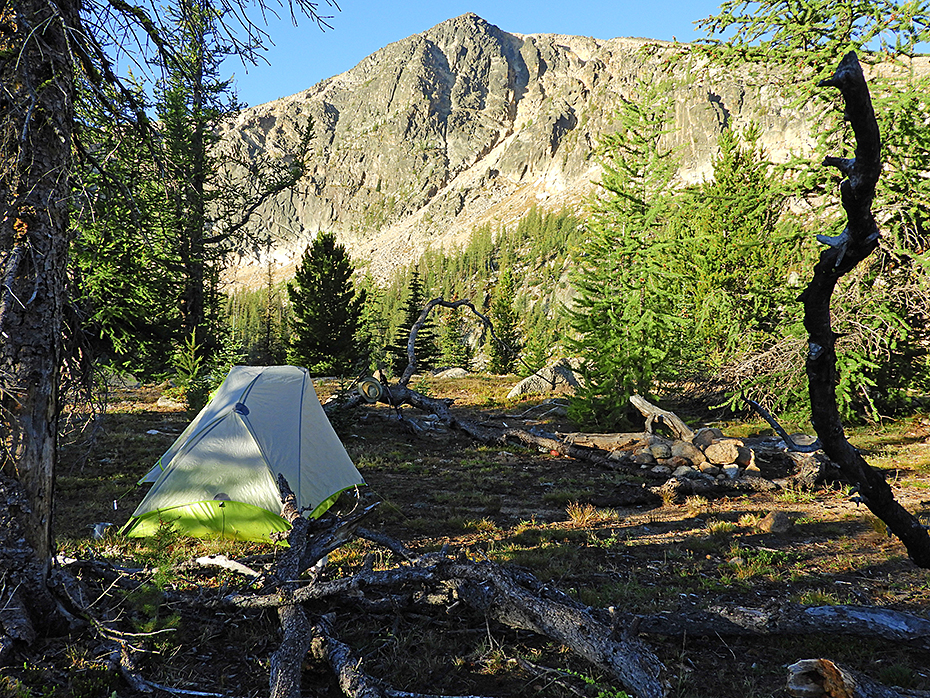
Our campsite on the shores of the largest of the lakes with Haystack Mountain beyond.
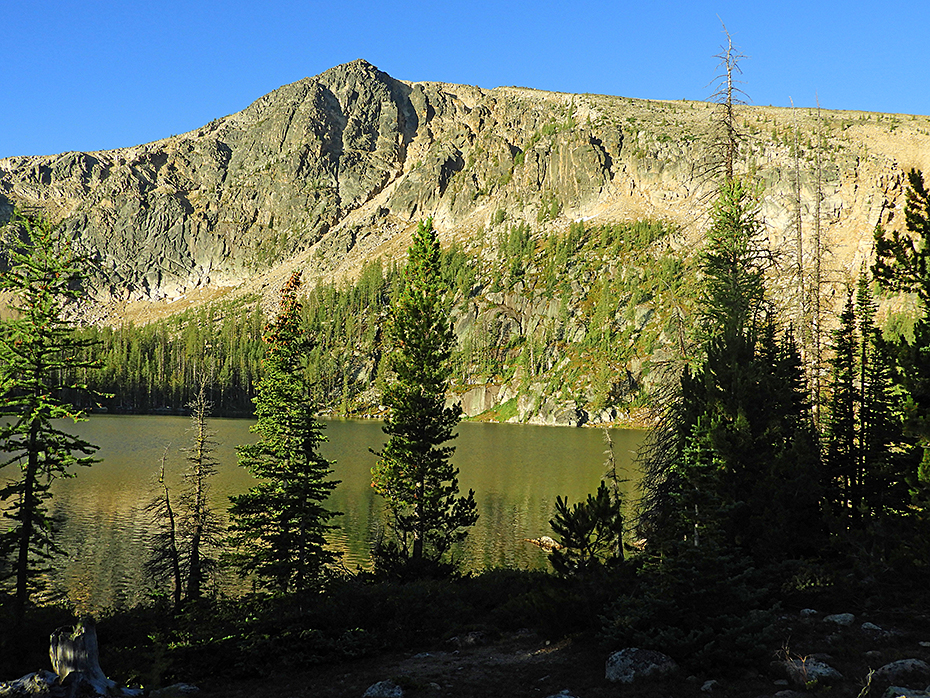
Early morning light on Haystack Mountain.
The next day, August 11, took us from Haystack Lakes through mostly forested habitat towards the Centennial Trail and eventually Ewart Creek. Although this was mostly downhill it proved extremely hard going in many places. A BC Parks trail crew had been through this route earlier in the summer and had marked the trail and chainsawed through huge areas of fallen trees, caused by beetle kill and some extreme wind events. Unfortunately their trail marking was somewhat haphazard and even though we were experienced hikers we lost the trail several times and this meant trying to go through almost impenetrable deadfall.
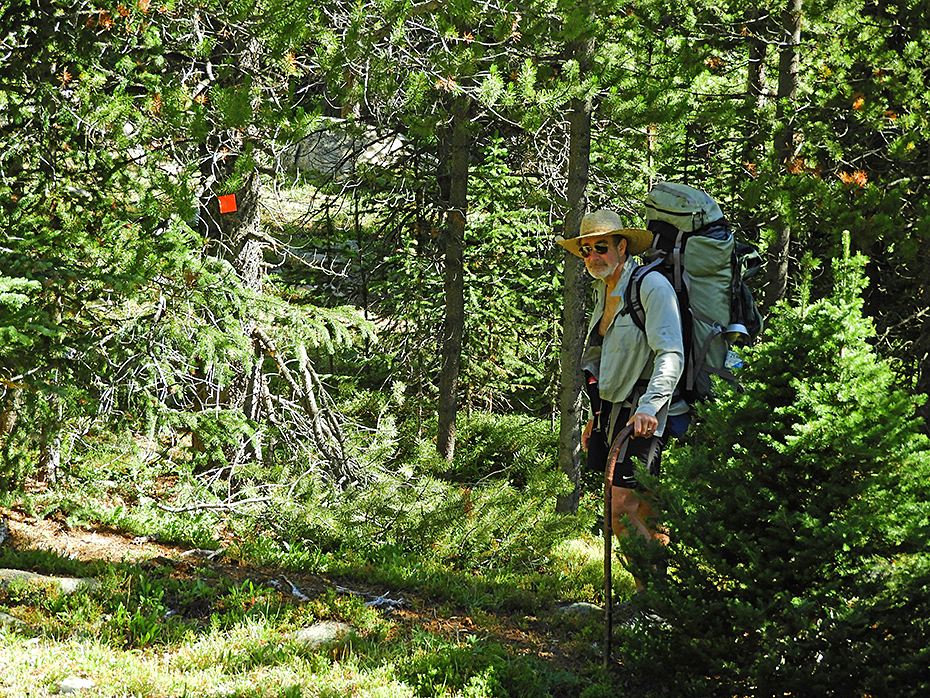
One of the new trail markers put up by the recent BC Parks trail team.
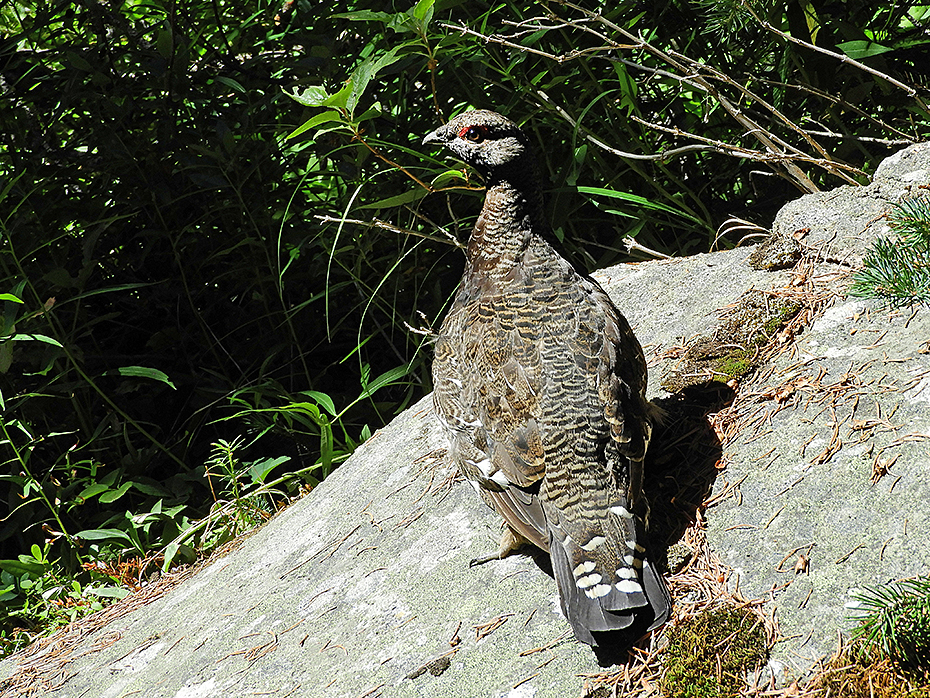
A Spruce Grouse in the forest near Haystack Lakes.
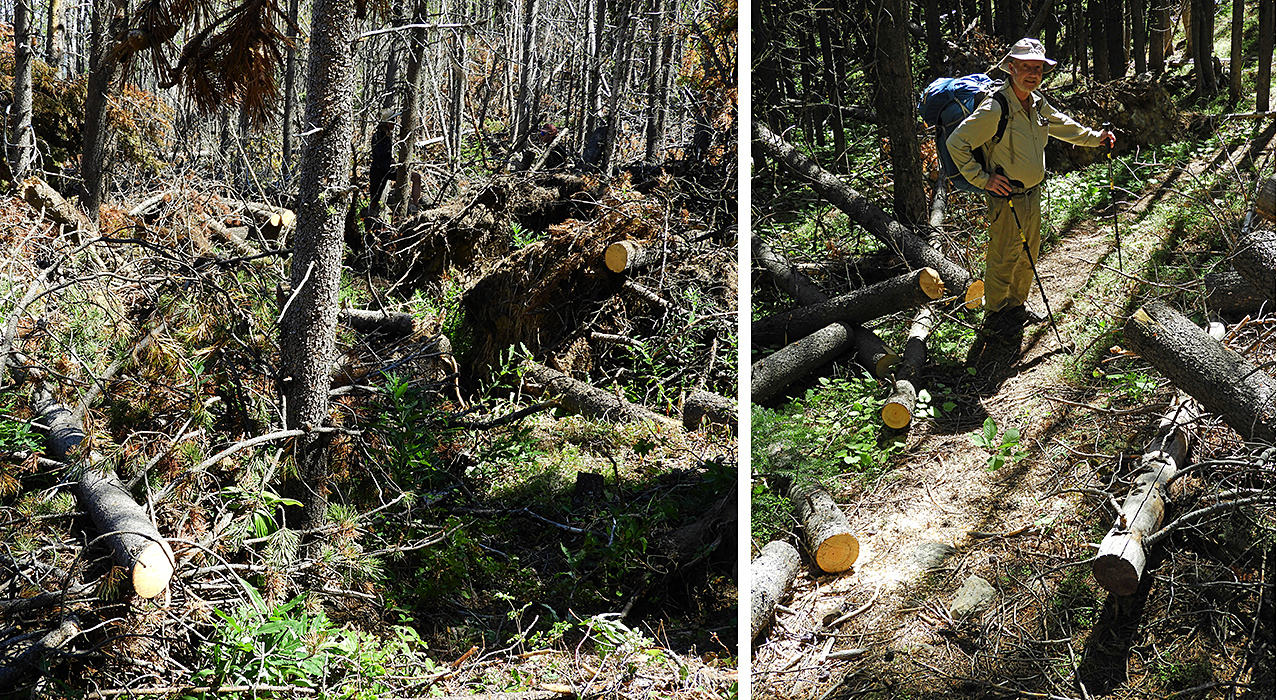
We were extremely grateful for the chainsaw work by the BC Parks trail team.
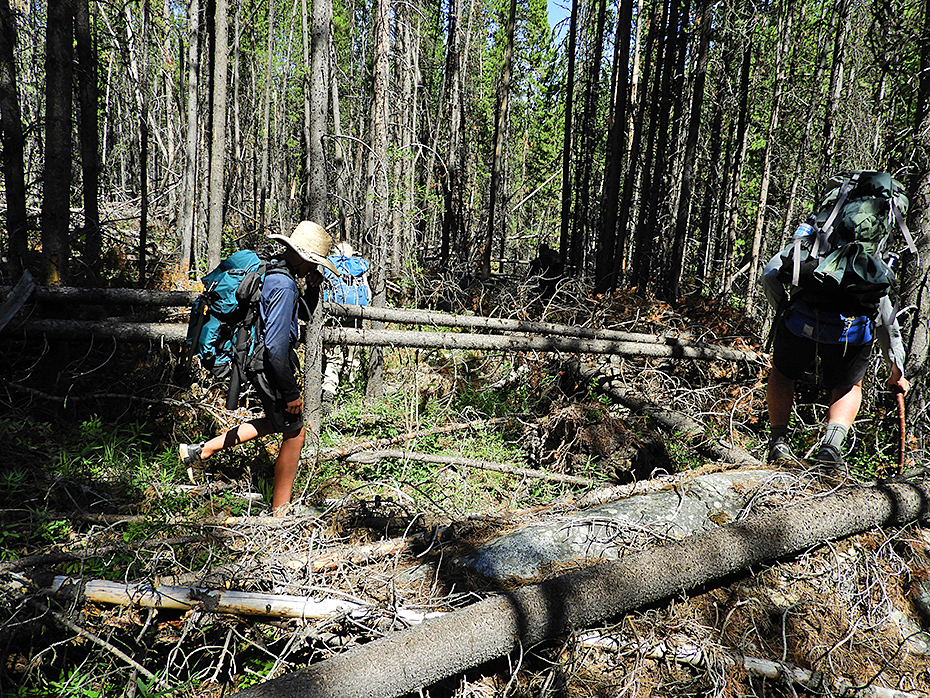
Hunting for the trail markers in the forest blowdown. This was extremely slow and heavy going, having to climb over and under hundreds of fallen trees.
Eventually we found the Centennial Trail which was well-marked and recently cleared, so by late afternoon we reached Ewart Creek on the eastern border of the park.
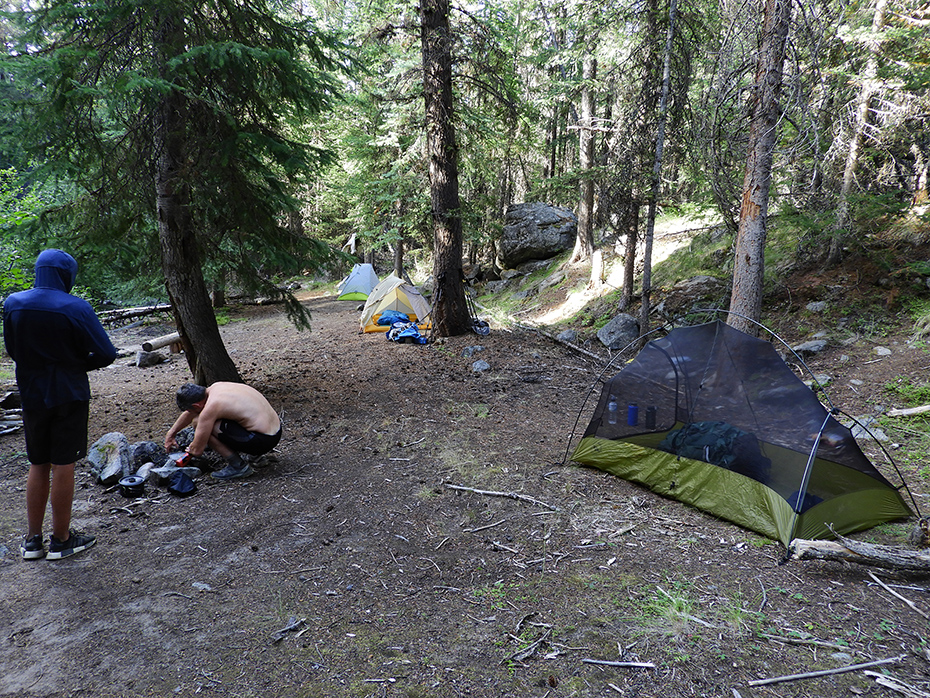
A very welcome place – the camp on the banks of Ewart Creek.
Our final day, August 12, involved a relatively easy hike down the well-used trail parallel to Ewart Creek and eventually to the trailhead 3 km from the Ashnola River main road.
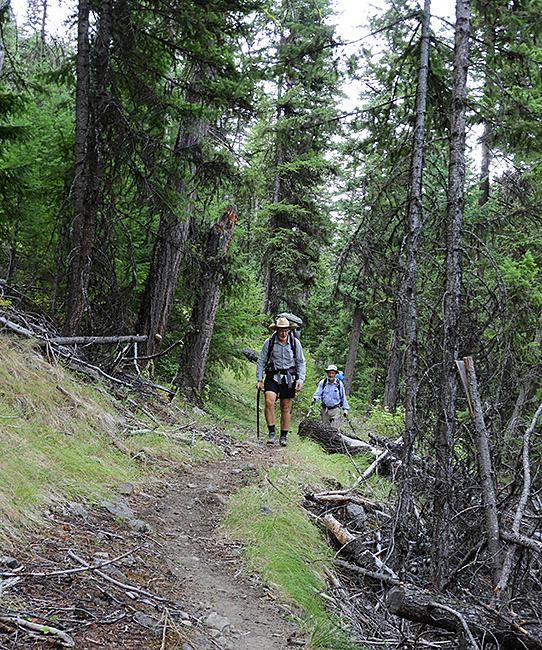
Duncan and Chris on the Ewart Creek trail.
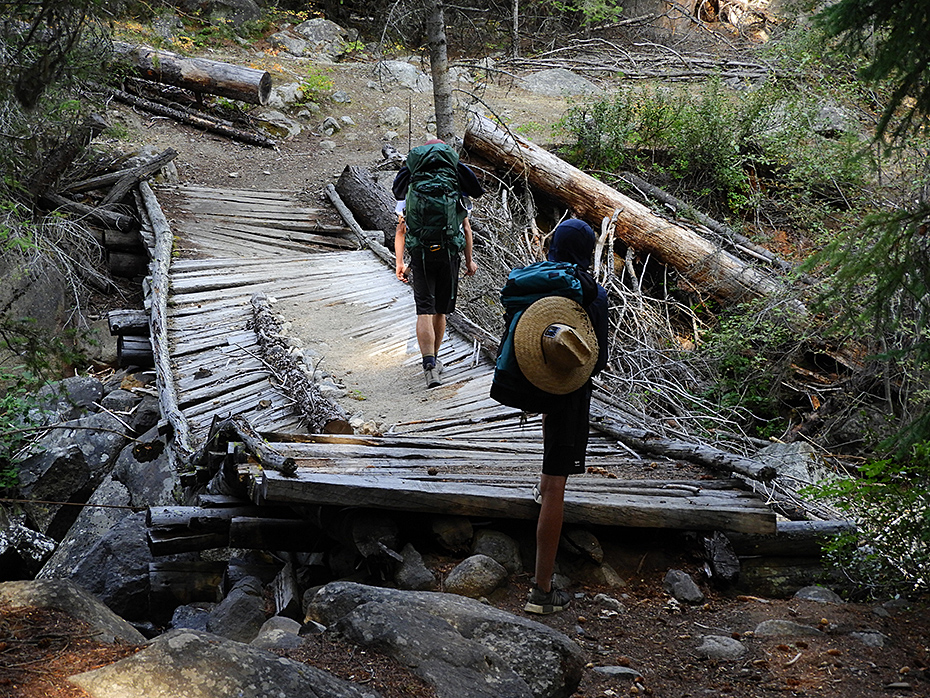
The bridge over Ewart Creek at the Juniper Creek confluence. This bridge was once a marvel of bush engineering but after 50+ years it is in sad disrepair and rather dodgy to cross.
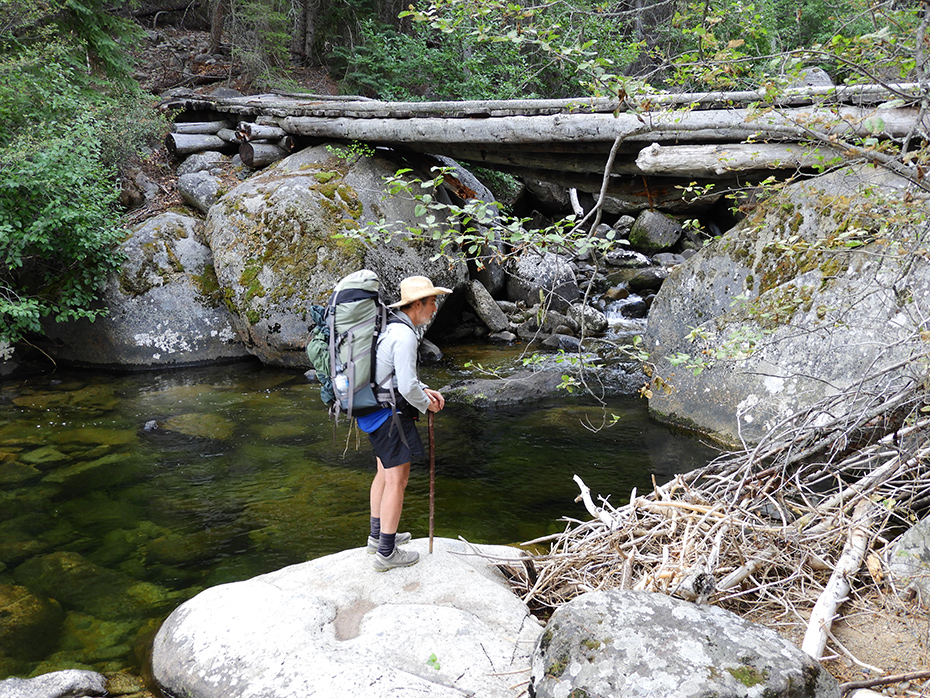
Duncan at the pool below the Juniper/Ewart Creeks bridge.
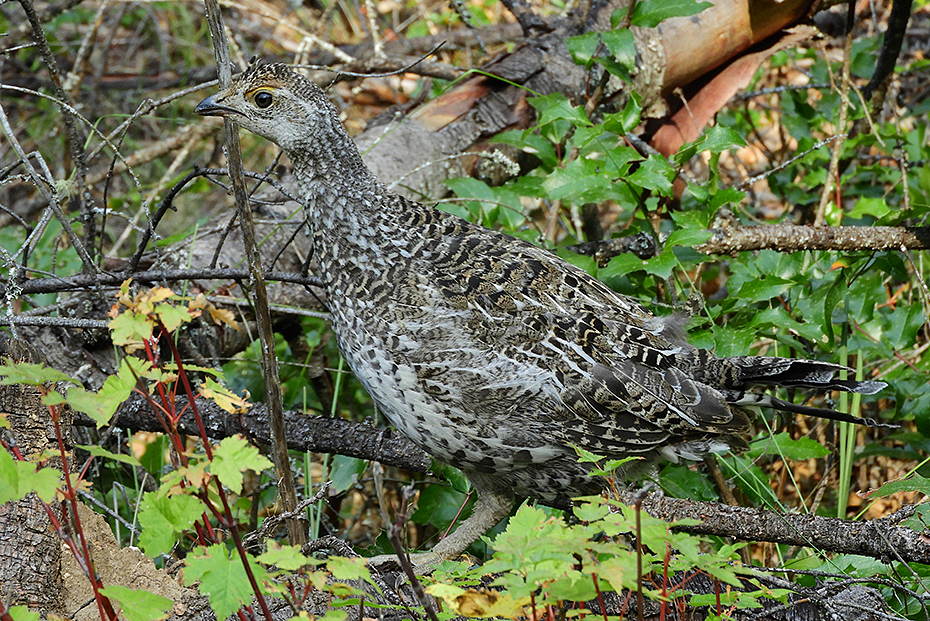
Here in the lower-elevation forest the common grouse was Dusky Grouse (formerly known as Blue Grouse). We found two families on the way down Ewart Creek. This is an almost full-grown juvenile.
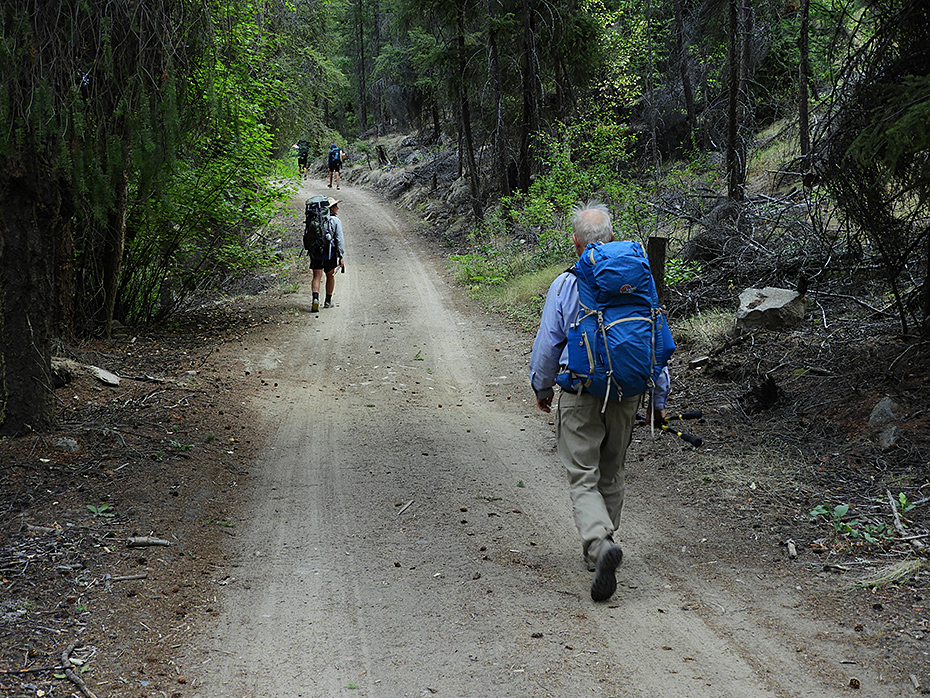
From the Ewart Creek trailhead we hiked 1.8 km down the road to find a place where we could cross the Ashnola River.
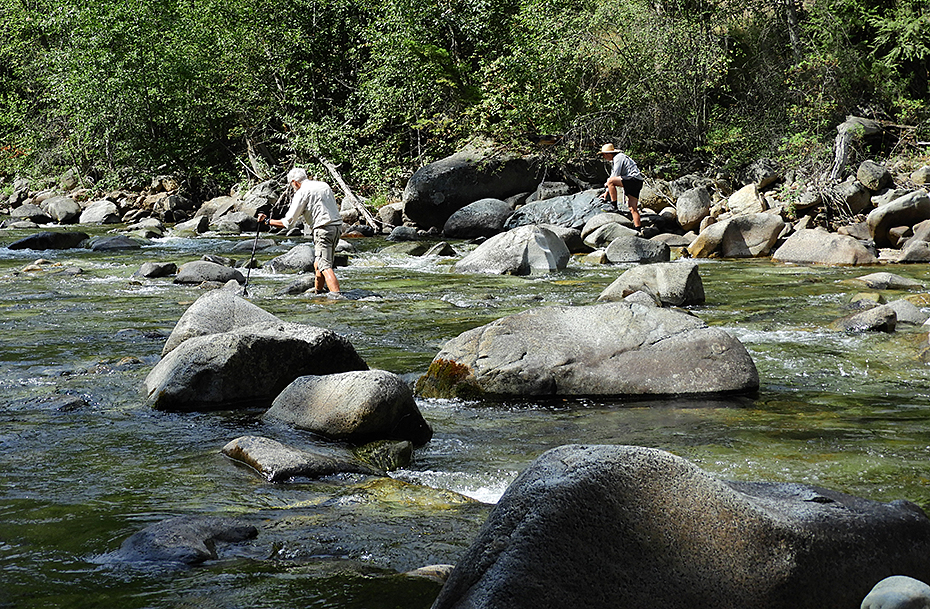
The final obstacle on our trip – wading across the Ashnola River.
Duncan and I waded the river to go and fetch our vehicles at the Cathedral Lakes Lodge base-camp. The road was right next to the river and within a few minutes we had a ride with a young couple for the 4+ km up to the base camp. But then we had to wait almost 2 hours for someone to let us into the compound to retrieve our vehicles.
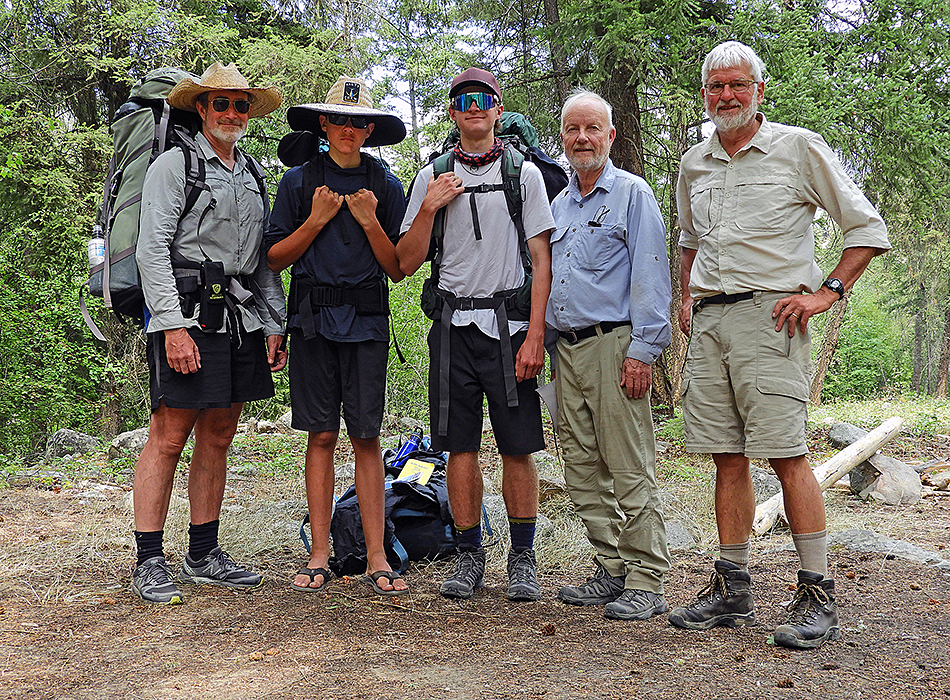
Sore-footed but happy! Our group just before heading home: Duncan, his sons Jake and James, Chris and Alan.
NOTE ADDED: Four days after we got home the Crater Lake fire, which had been burning for weeks near Cathedral Lakes Park, suddenly erupted into a huge fire causing evacuations of the park, the Lodge and for many other residents nearby. It remains a mystery why the BC Wildfire Service didn’t control or kill the fire when it was just a small smouldering fire that was allowed to burn for weeks before it suddenly flared to become a major threat.
